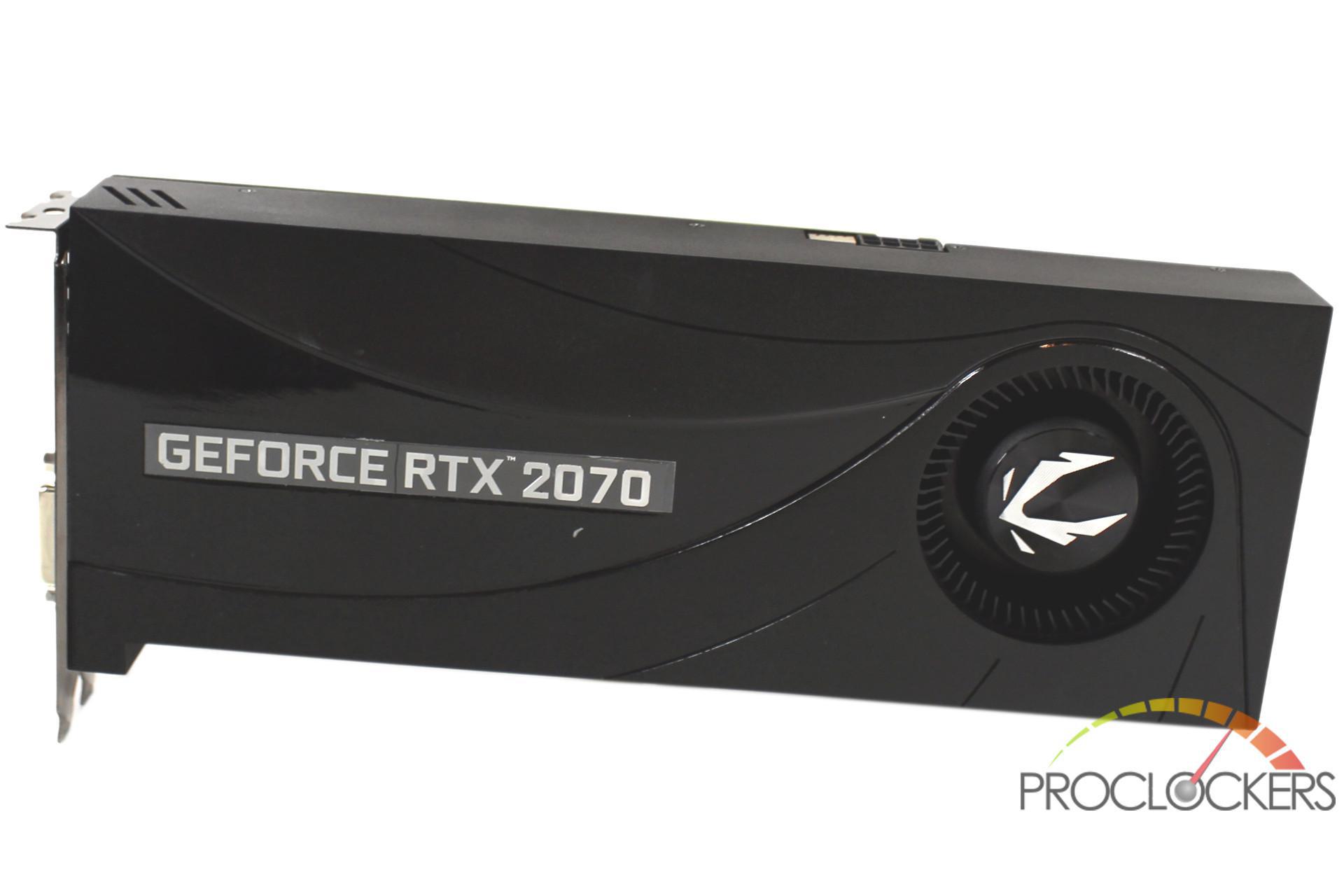Hardware
ZOTAC GAMING GeForce RTX 2070 Blower Review
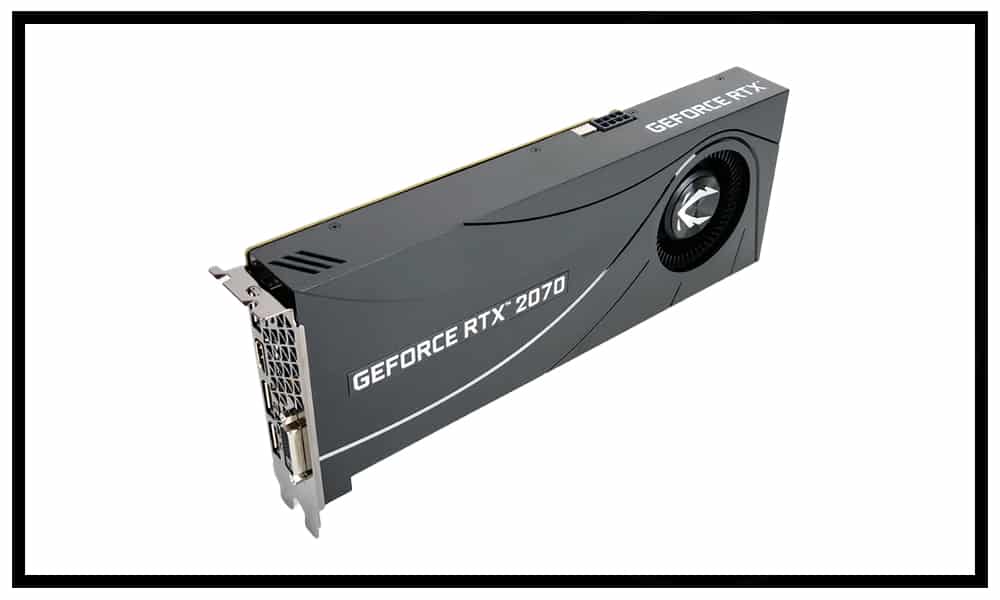
Introduction
Hot on the heels of the recent RTX 2080 and 2080TI, the most powerful consumer graphics cards to date, comes the RTX 2070. Powered by Nvidia’s Turing architecture, the Nvidia RTX platform brings together real-time ray tracing, artificial intelligence, and programmable shading for the best of tomorrow’s gaming today. It features 2304 CUDA Cores, 8GB of GDDR6 memory, 36 RT cores for Ray Tracing and 288 tensor cores for Deep Learning. Targeted at the masses around the 1440p gaming market and starting at an MSRP of $499, the RTX 2070 promises to be a gamer’s best friend. Zotac takes it a step further by adding their Firestorm tuning software to get the best performance and a blower style cooler that will immediately exhaust warm air from your case instead of dumping it inside to heat up the rest of your system.
ProClockers would like to thank Zotac for sending over the GeForce RTX 2070 to check out!
ZOTAC take on the GAMING GeForce RTX 2070 Blower:
The all-new generation of ZOTAC GAMING GeForce graphics cards is here. The powerful new GeForce RTX™ 2070 takes advantage of the cutting-edge NVIDIA Turing™ architecture to immerse you in incredible realism and performance in the latest games. The future of gaming starts here.
Features:
- GDDR6 memory
- FireStorm
- OC Scanner
Features & Specifications
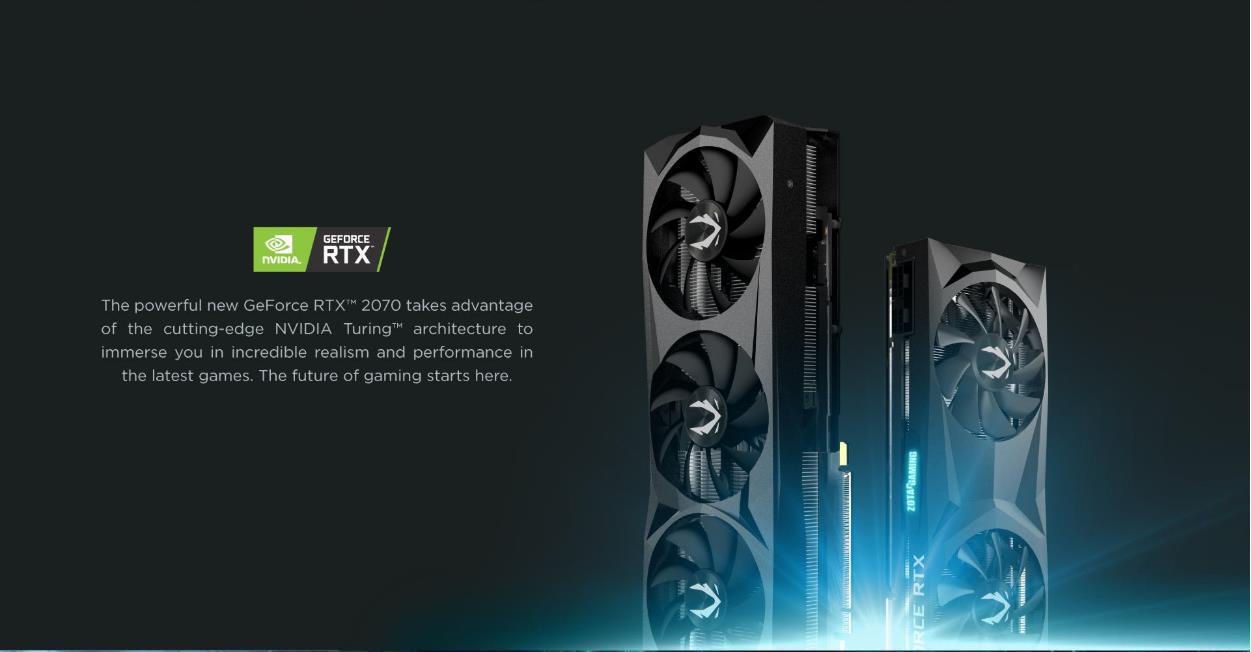
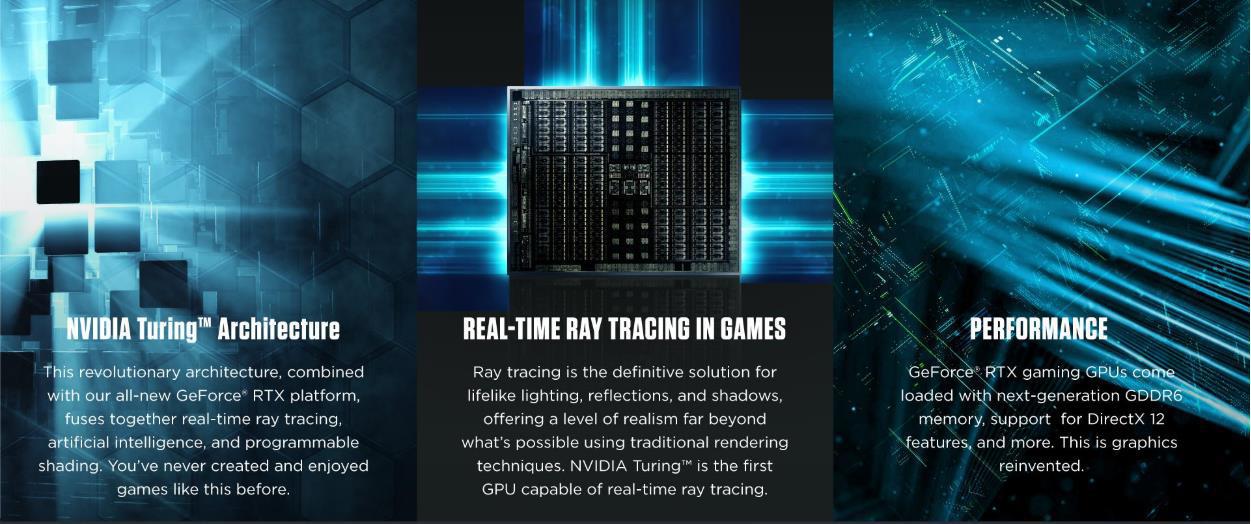
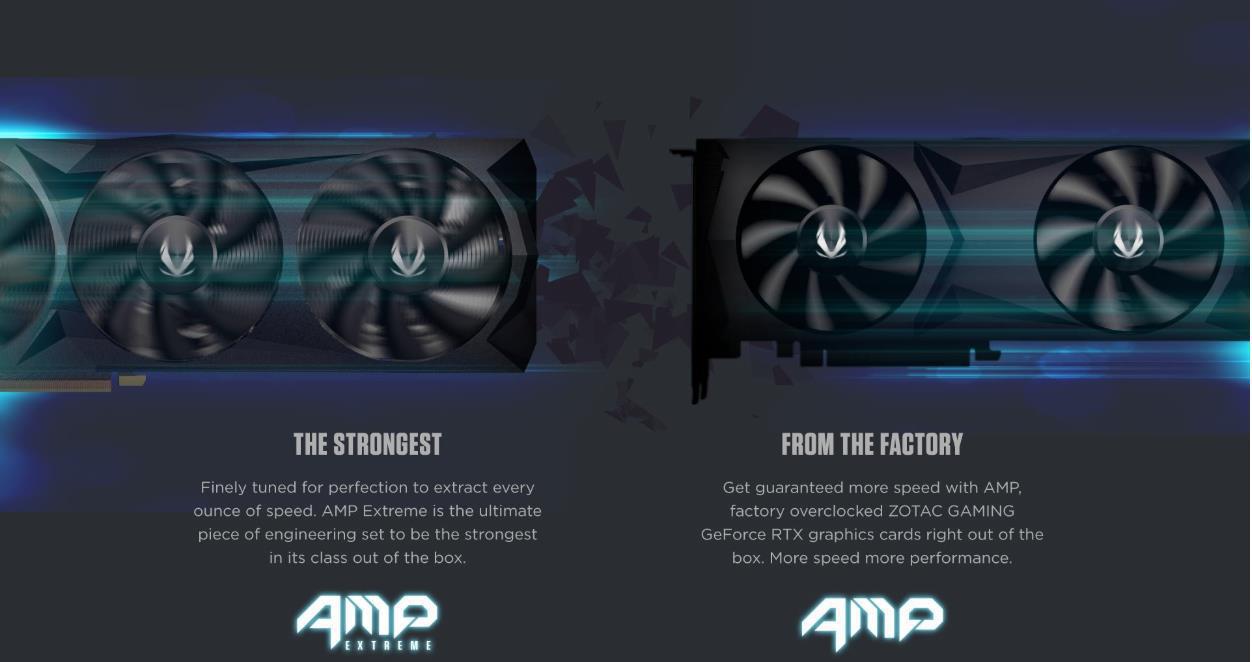
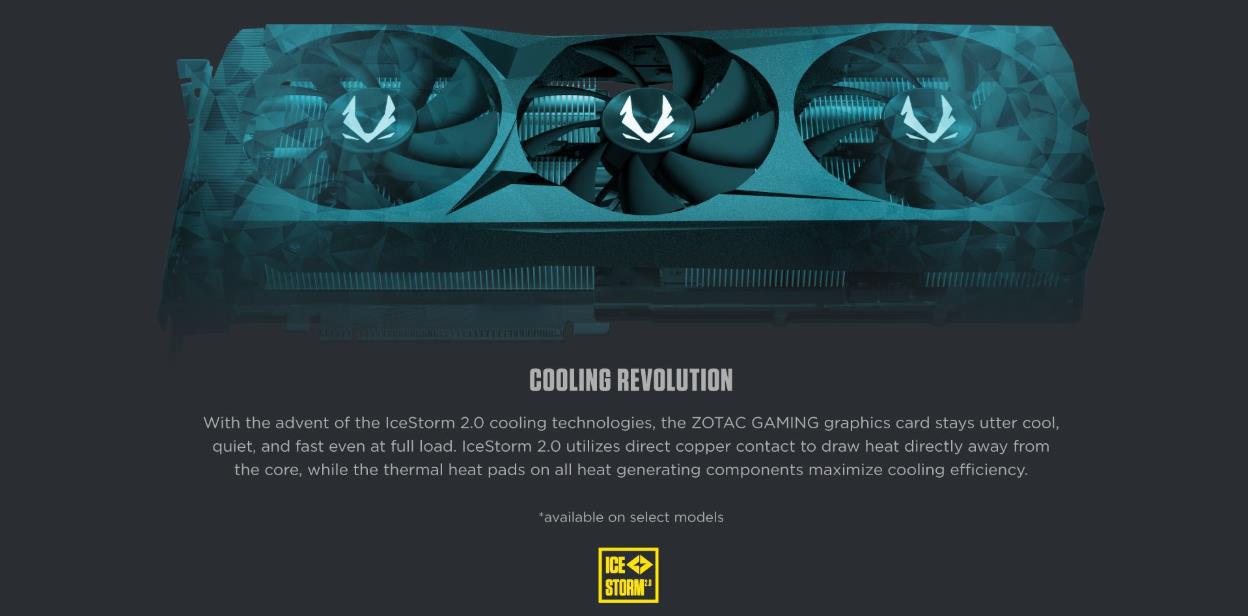
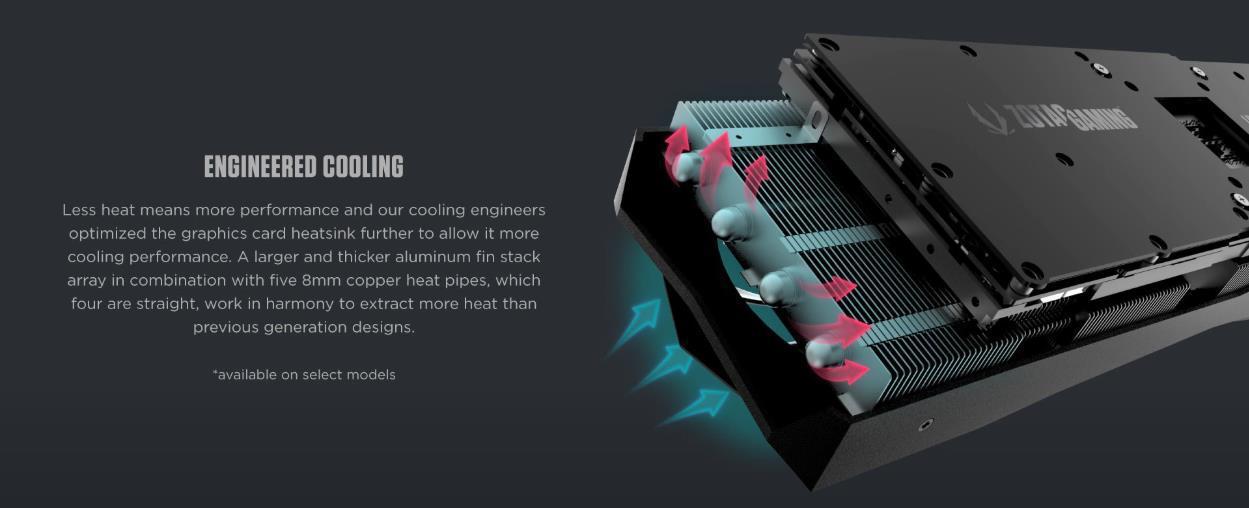
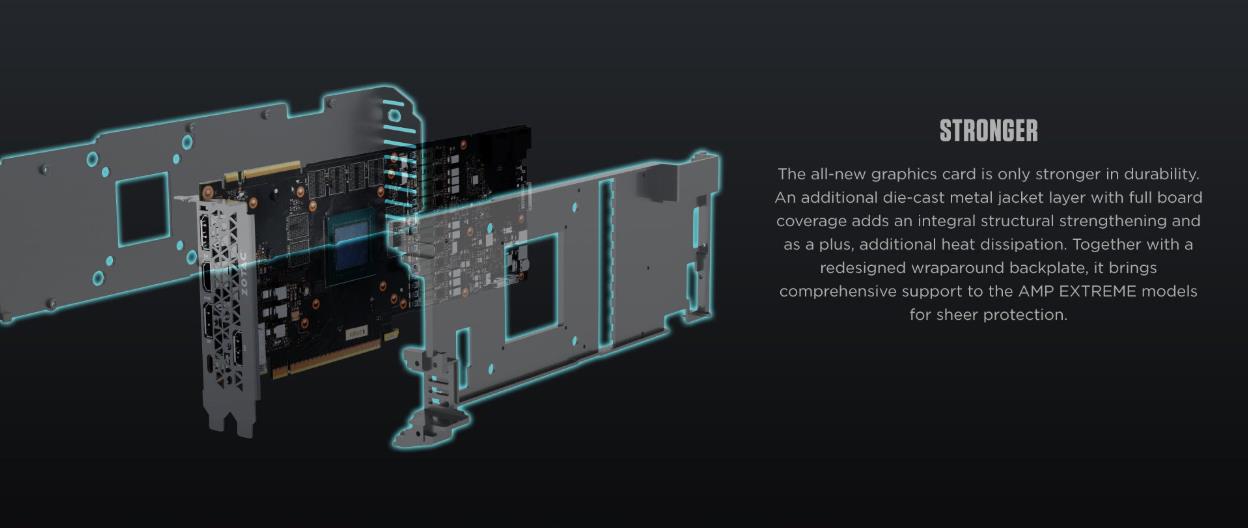
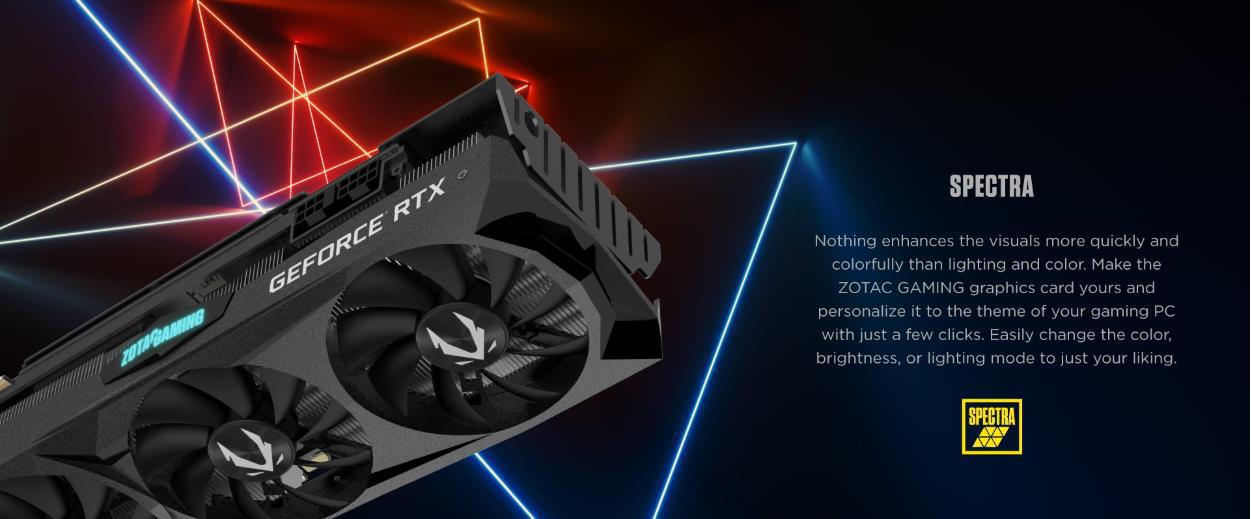
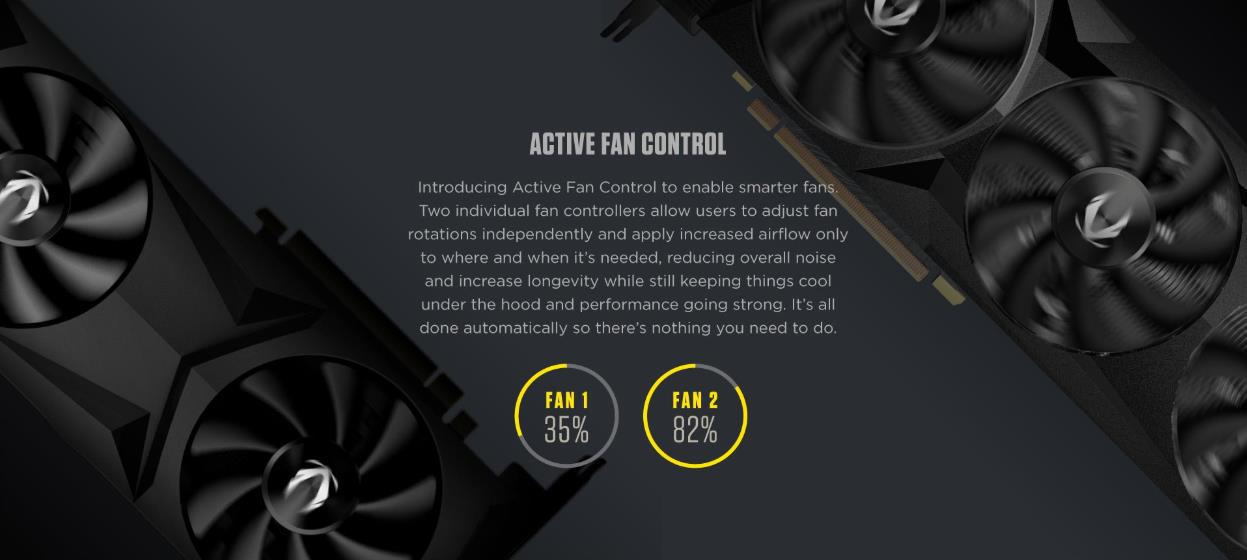
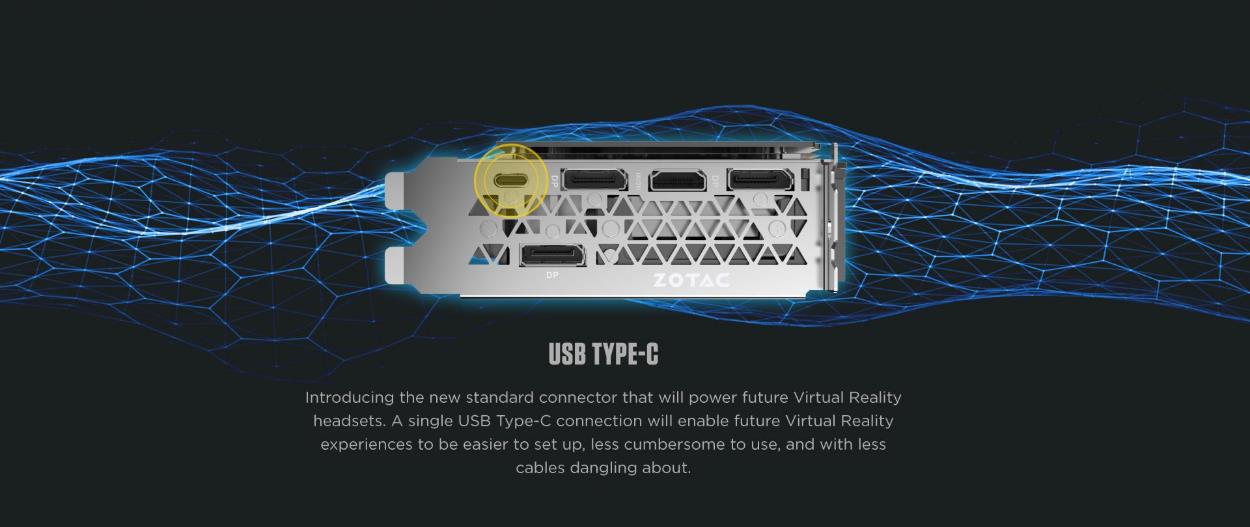
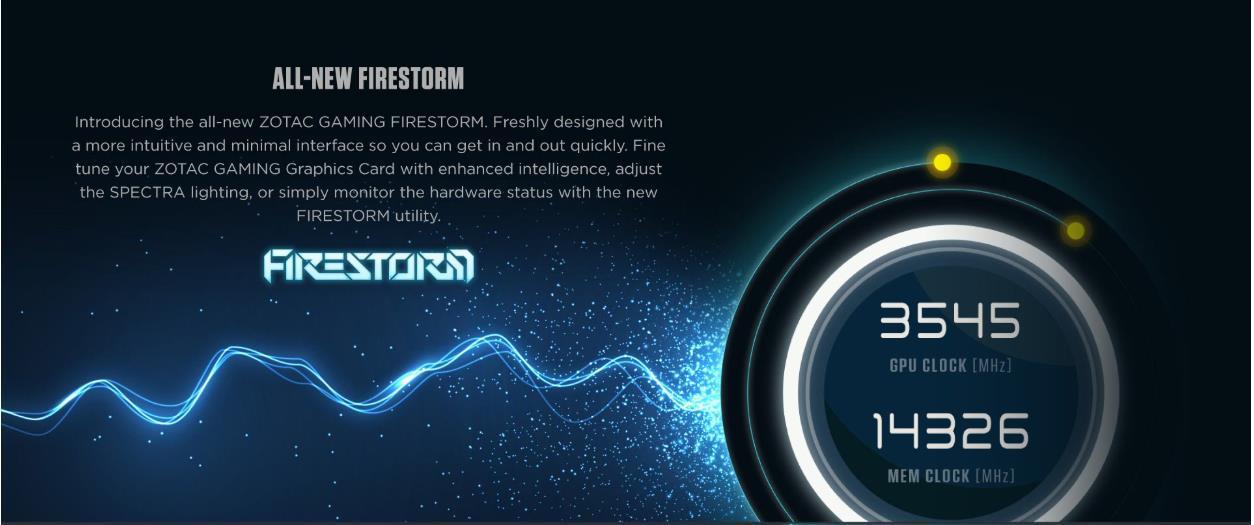
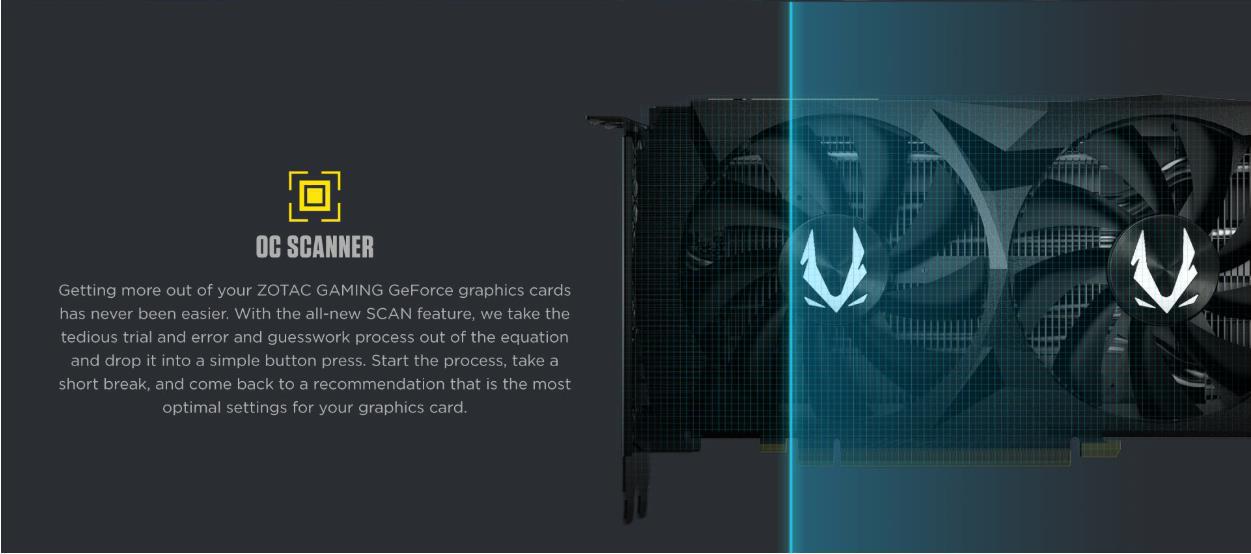

Packaging & Unboxing
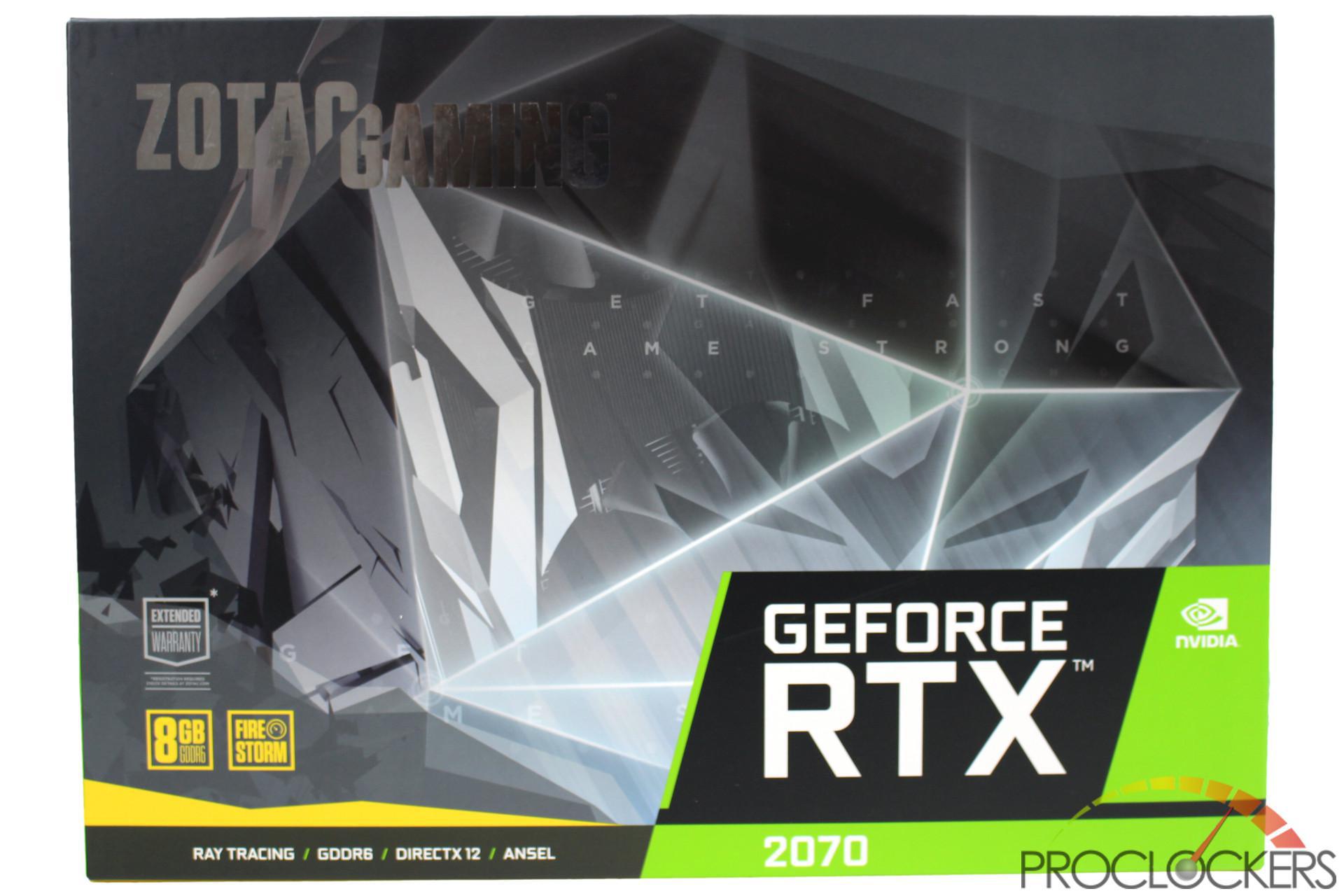
Zotac’s Gaming RTX 2070 blower comes in a decorative box with lots of subtle details. The Zotac Gaming logo is drawn in metallic letters across the top. The slogan ‘Get Fast, Game Strong’ is very subtle in the center of the box. The usual Nvidia insignia holds down the bottom right corner.
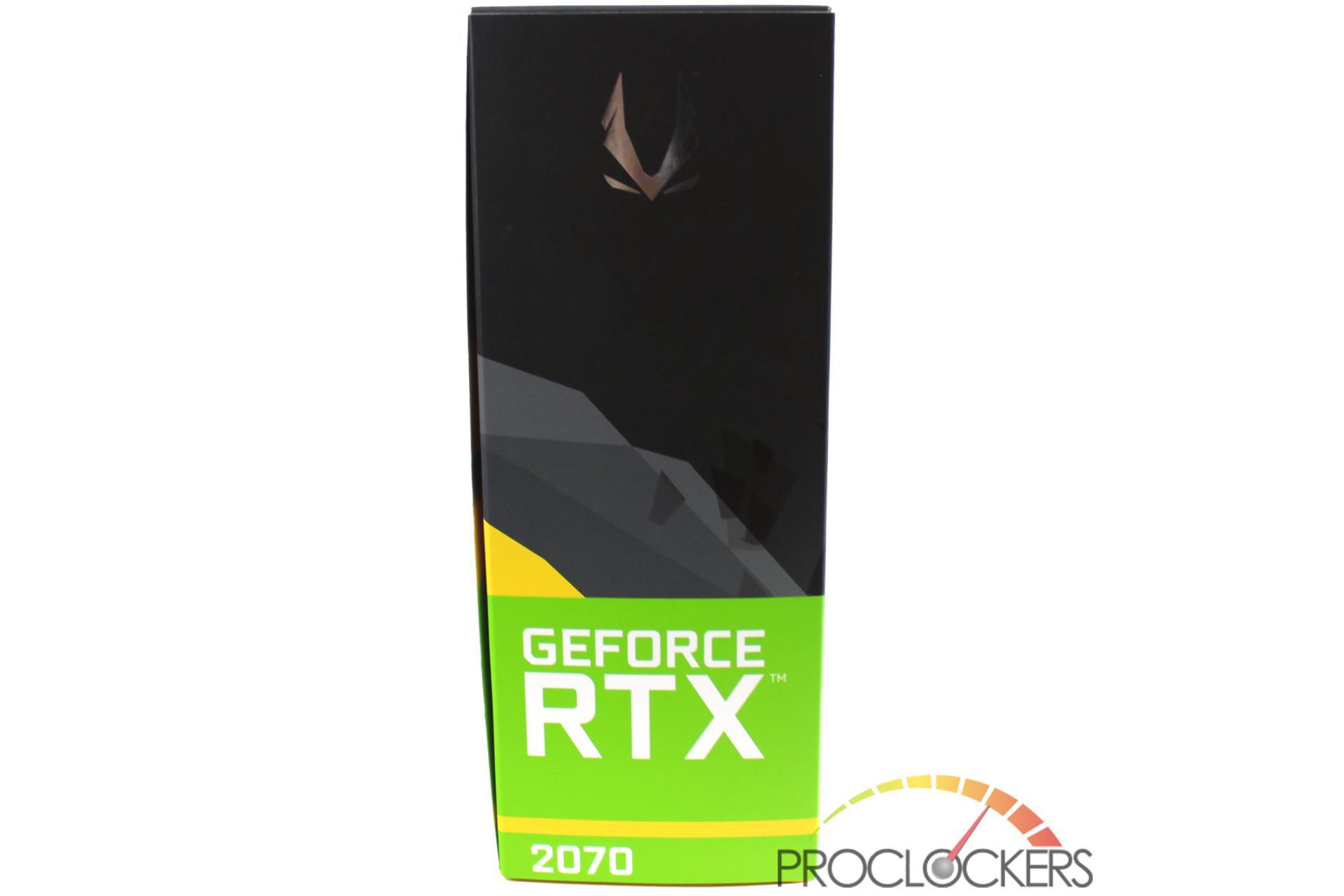
The ends of the box have just the RTX 2080 logs and the Zotac Gaming Logo.

The rear of the box has a blurb about the Nvidia RTX lineup as well as the Zotac gaming lineup. Minimum system requirements, features, and specs run along the center.
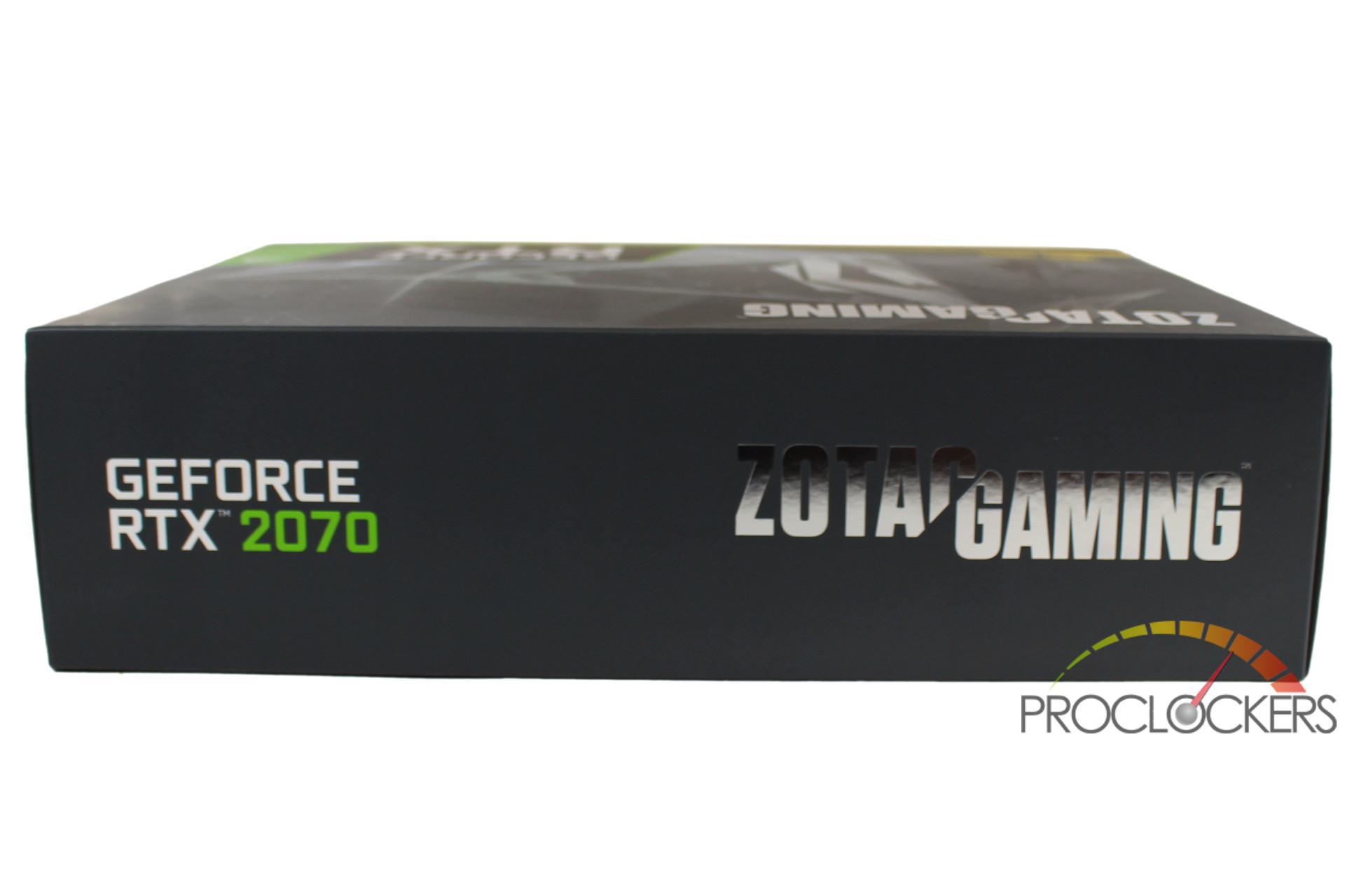
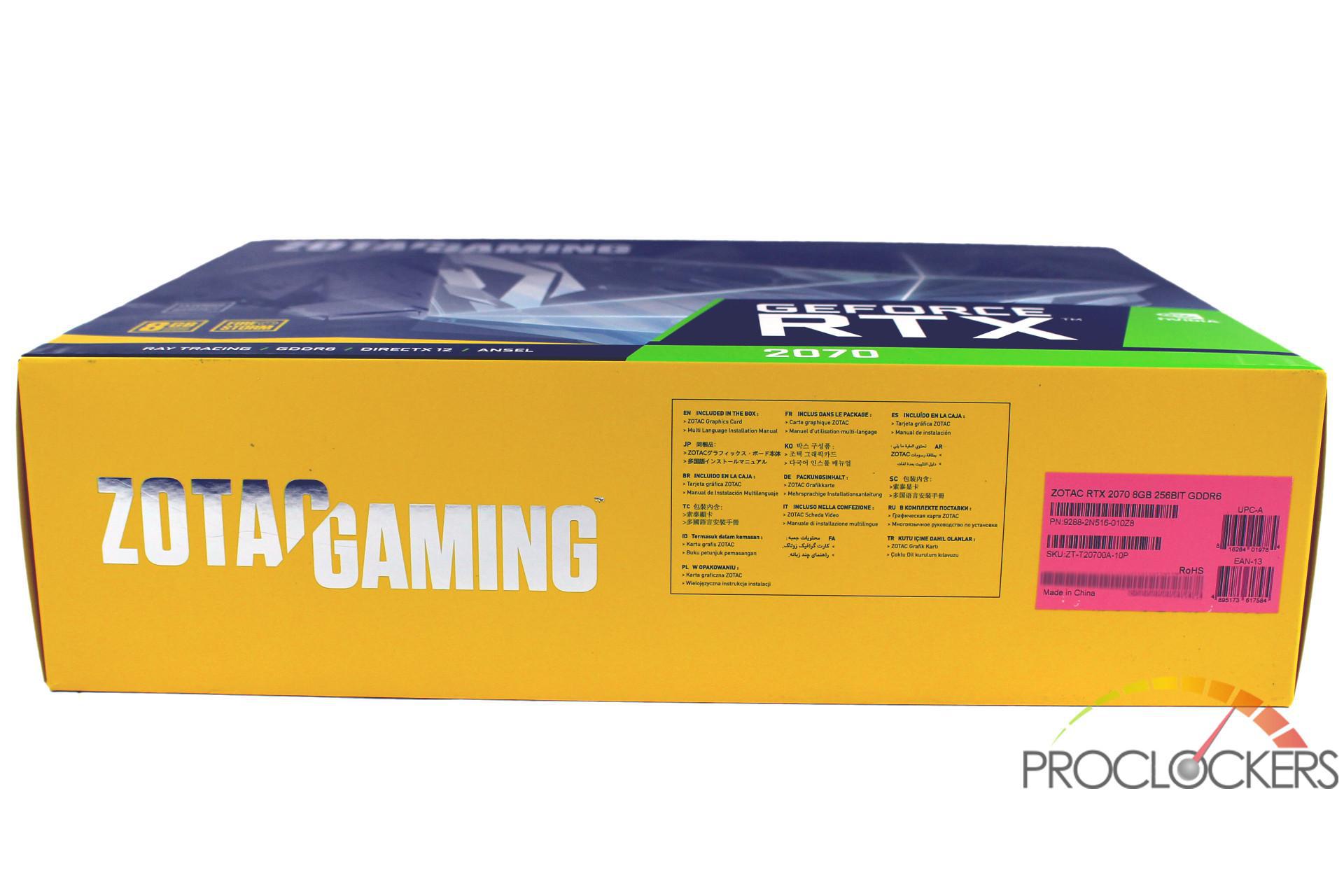
The bottom of the box has the UPC sticker. As we have a pre-launch Quality sample, our label is bright pink. Keep in mind that because of this, there will be minor differences between what you see here physically, and what you would get off a store shelf near you.
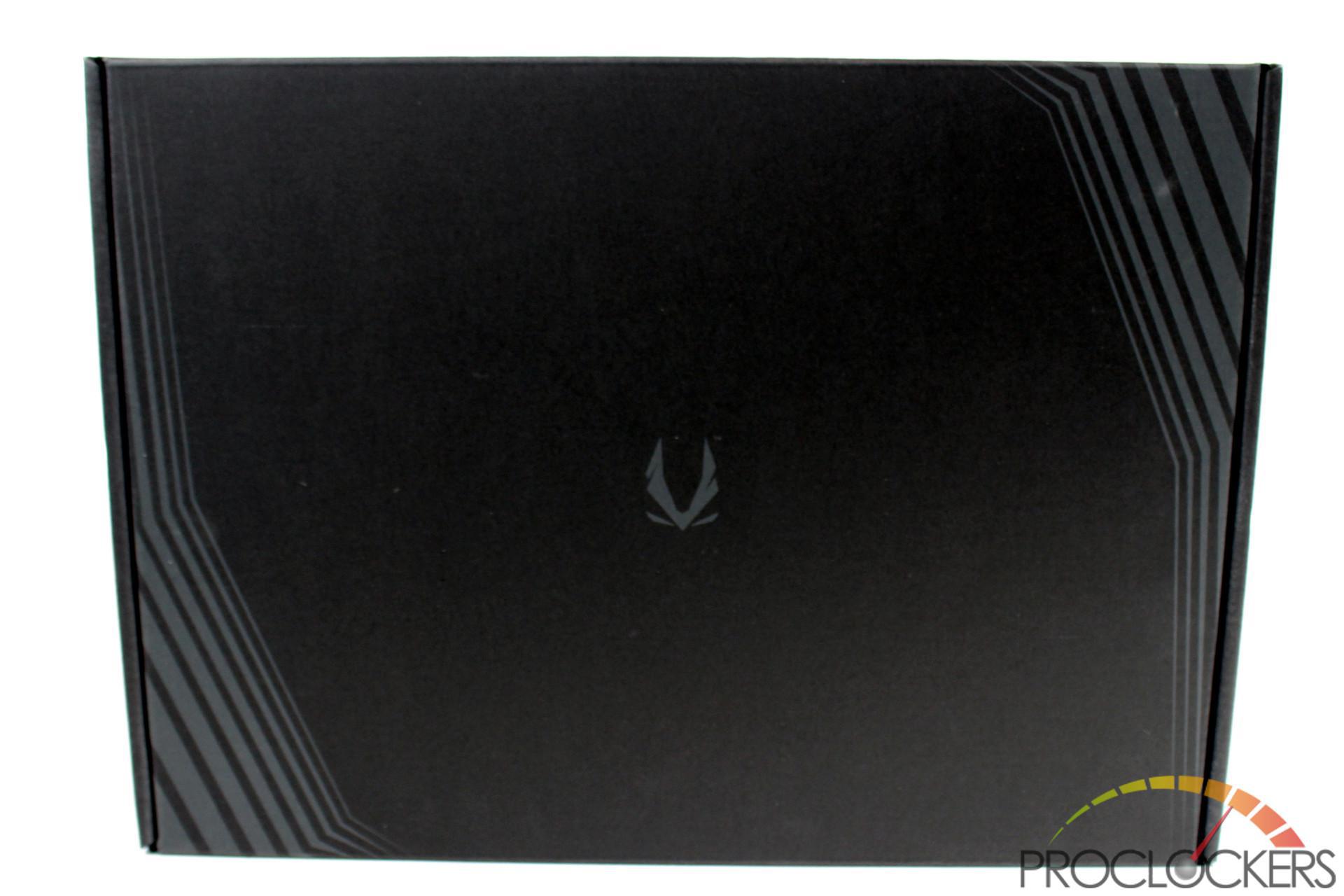
Inside the colorful sleeve is a black box with the Zotac Gaming logo in the center in a subtle grey.
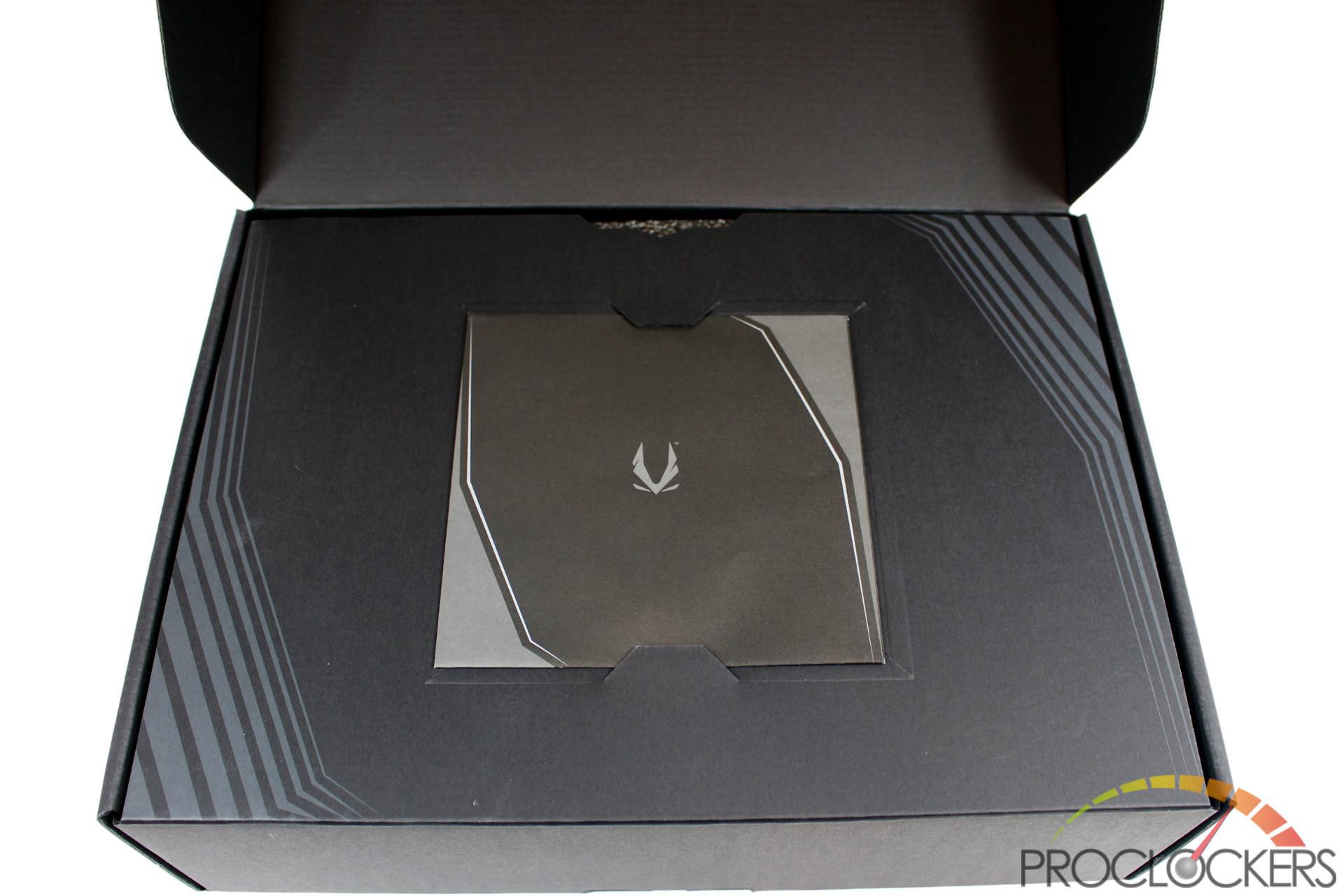
The inner flap holds a small envelope with only the Zotac Gaming on it. Inside the envelope is an installation manual.

Under the 2nd flap is a sheet of heavy foam that protects the card.

The RTX 2070 Blower itself is in an ESD bag in a cutout in a large foam block. A few extra holes would hold accessories like molex to PCIe adapters on a retail card.
A Closer Look
Zotac Gaming’s GeForce RTX 2070 Blower uses a cooler very similar to previous generations. The RTX 2070 logo splashes right through the center of the card and some swooping accent lines glide back to swirl around the fan intake. The Zotac Gaming logo can be found on the fan.
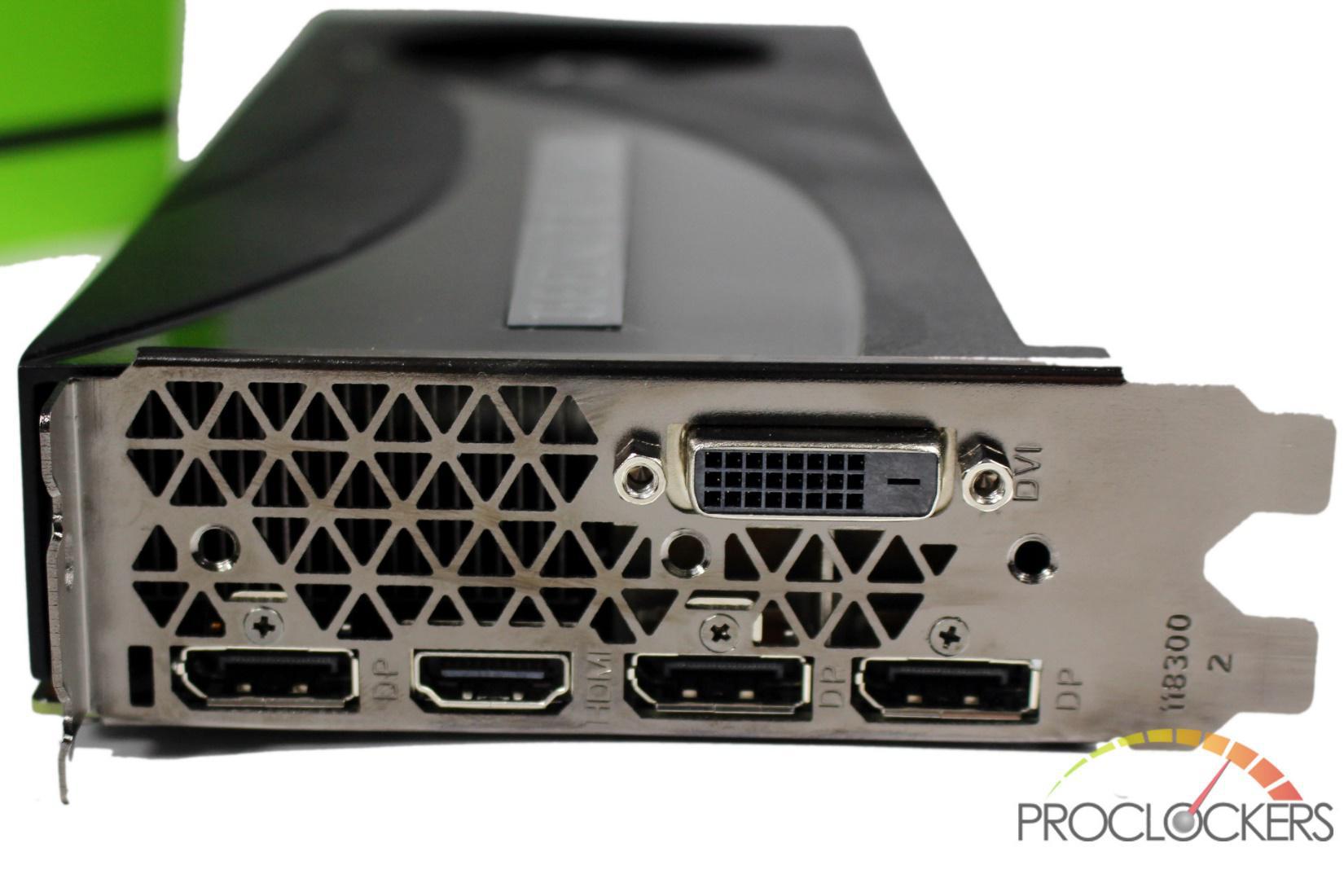
Zotac equips the RTX 2070 with a trio of Display port 1.4 ports, a single HDMI 2.0b port, and a Dual Link DVI-D port.
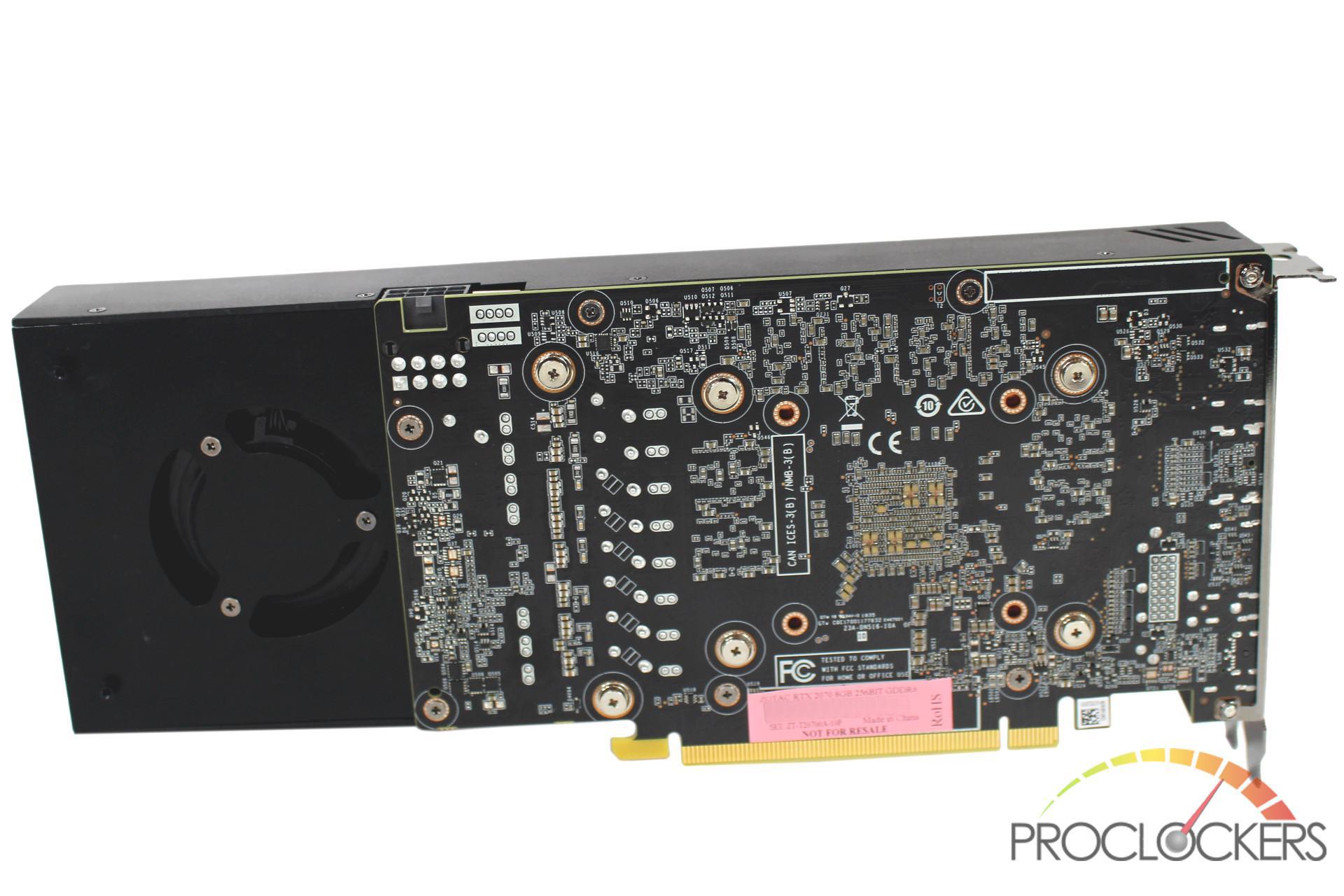
At the entry level of the lineup, Zotac saves some money by skipping the back plate. With this, you can see that the actual card itself is significantly shorter than the cooler assembly. The Pink serial number label near the PCIe connection is for our pre-production quality sample. Notice the 2070 does not include the NV-Link connection found on the 2080 and up. Power is provided by a single 8-pin PCIe connection.

Zotac’s RTX 2070’s cooler comes off with just a handful of screws to give us a peek under the hood.
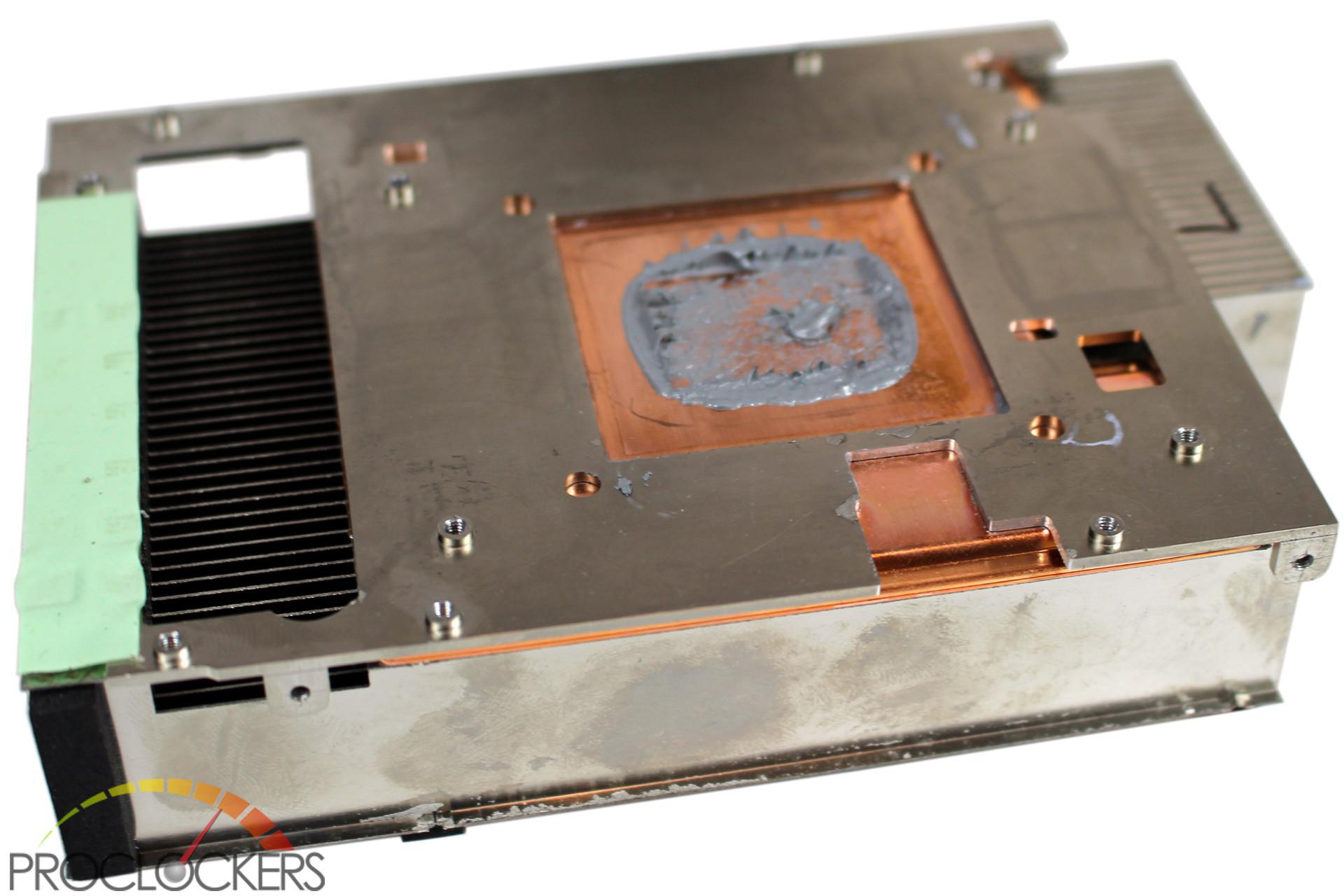
Four screws get us an easy removal of the heat sink assembly. The frame and fins are nickel plated, but the business end that touches the GPU die is solid copper.
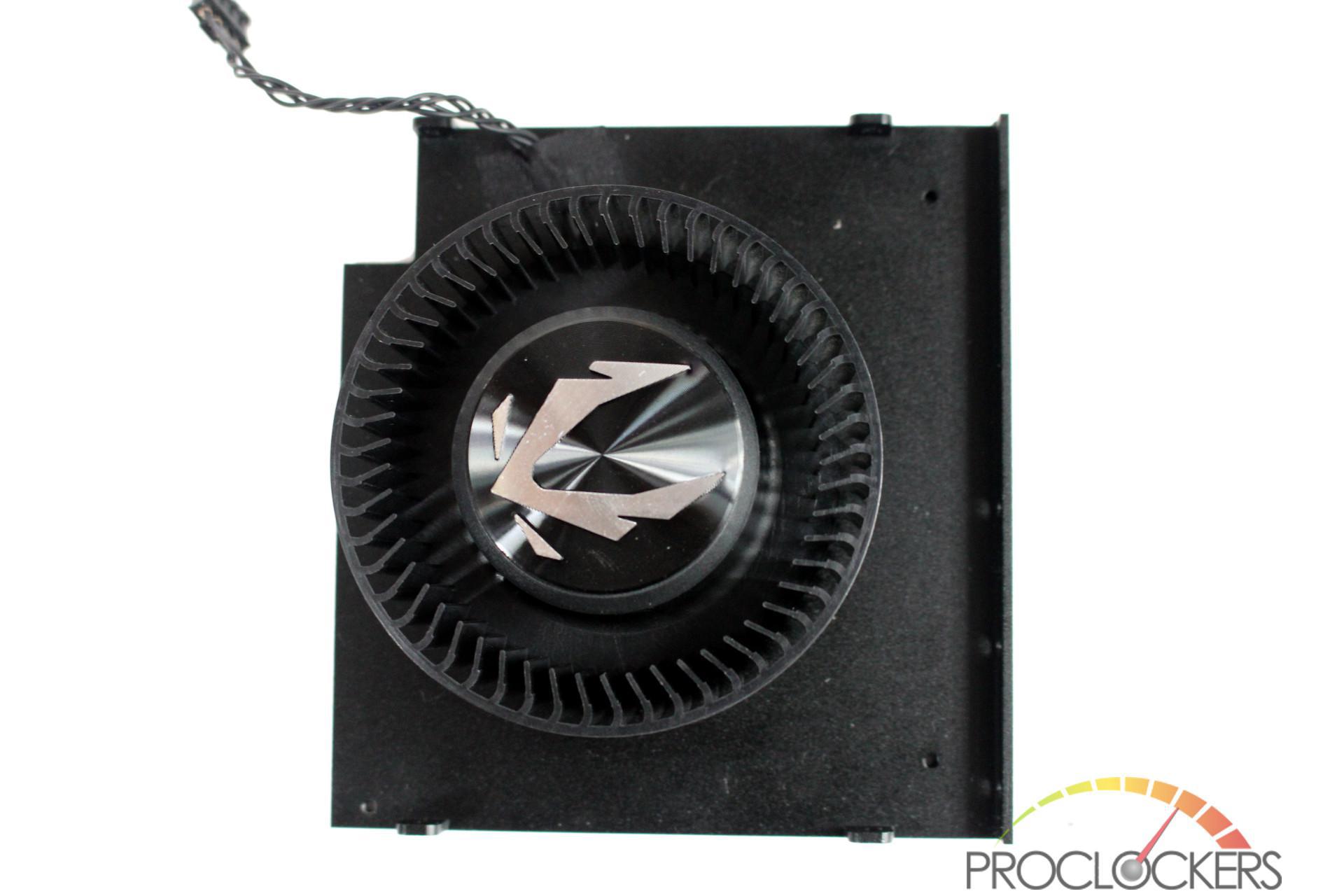
The fan module comes out with 4 screws. Zotac Gaming’s logo sits in the center of the fan hub and is visible on the front of the card.
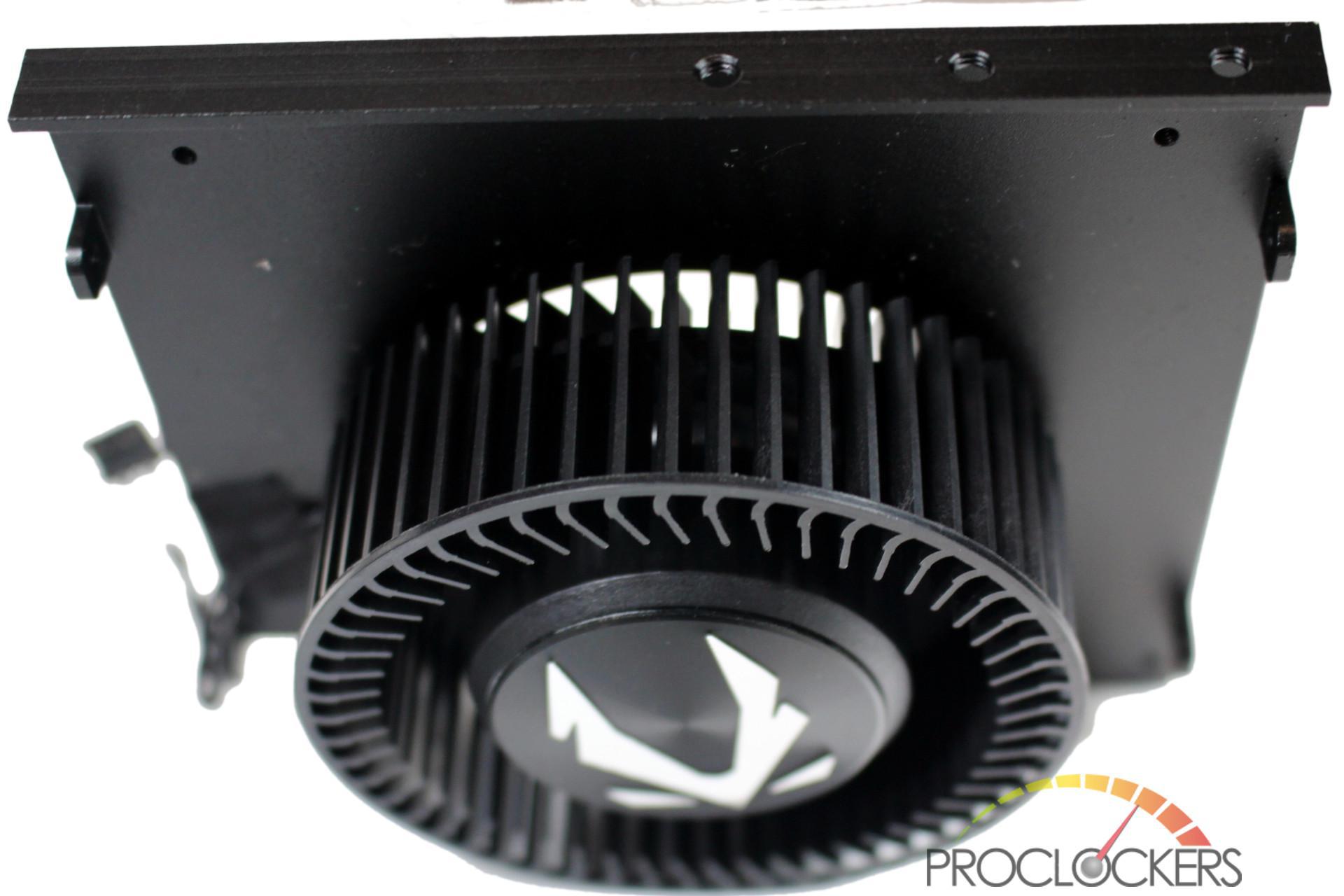
The blower itself draws air from both sides of the card and is nearly 2 slots thick itself. This lets it move a ton of air without having to run quite as fast or loud.
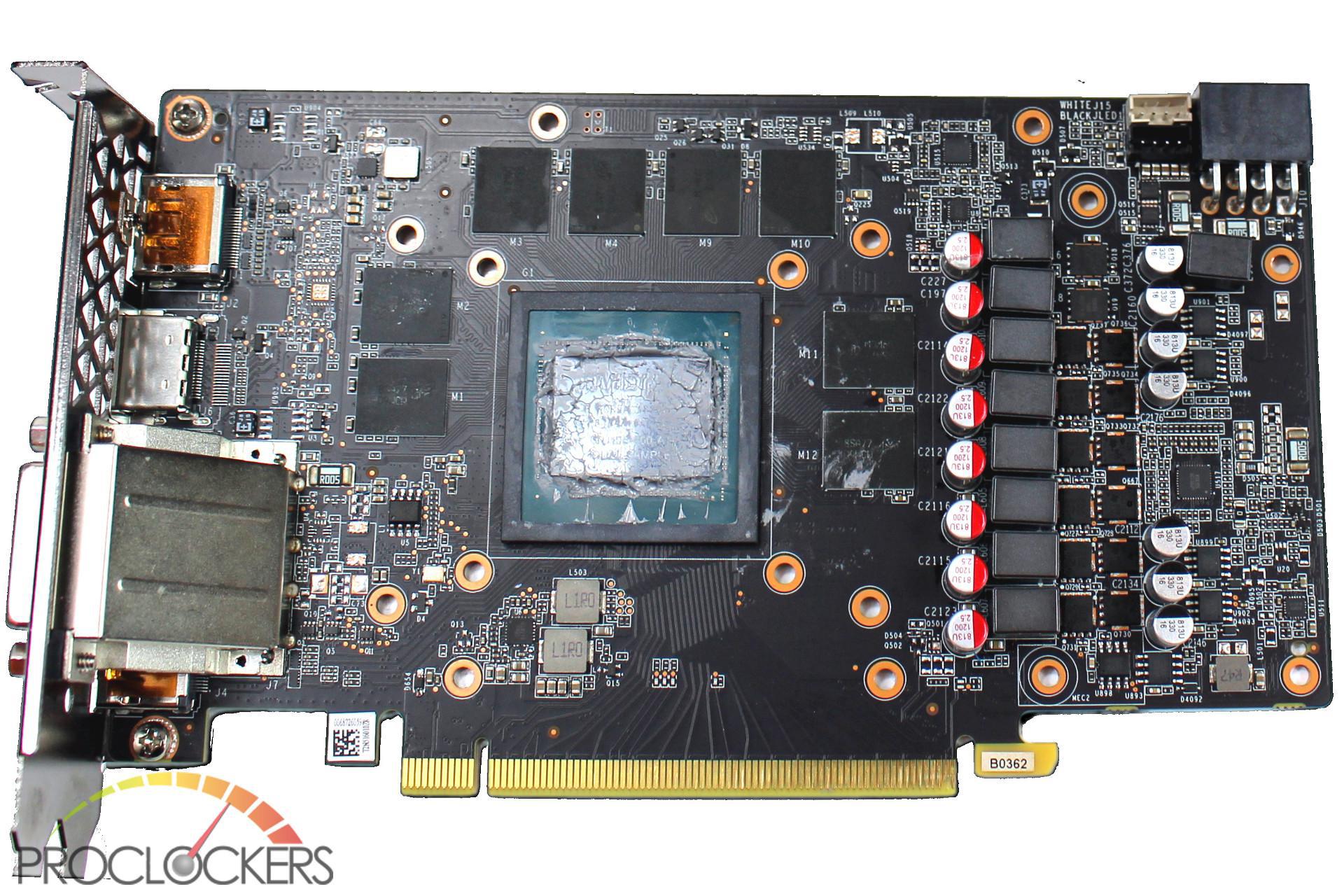
The actual PCB of the Zotac Blower model RTX 2070 is quite compact. Power delivery is only on the back edge of the card. Eight memory IC’s surround the TU106 GPU. The 6+2 phase VRM covers a very small area on the back of the card near the sole 8-pin PCIe power connection.
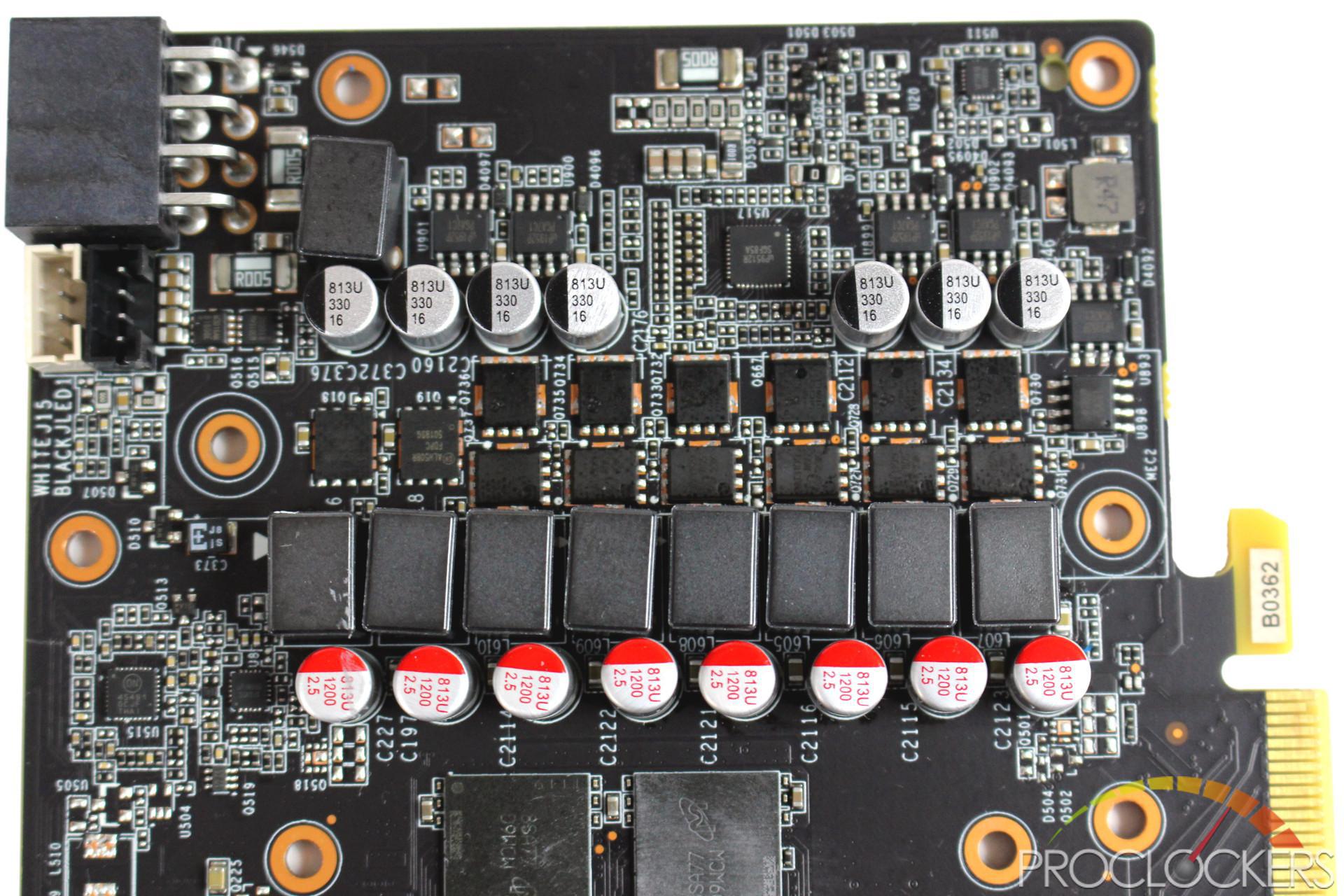
The RTX 2070 is powered by Nvidia’s TU106-400-A1 die. Our particular review card is a pre-production quality sample and carries the ‘Qual Sample’ markings that yours won’t.
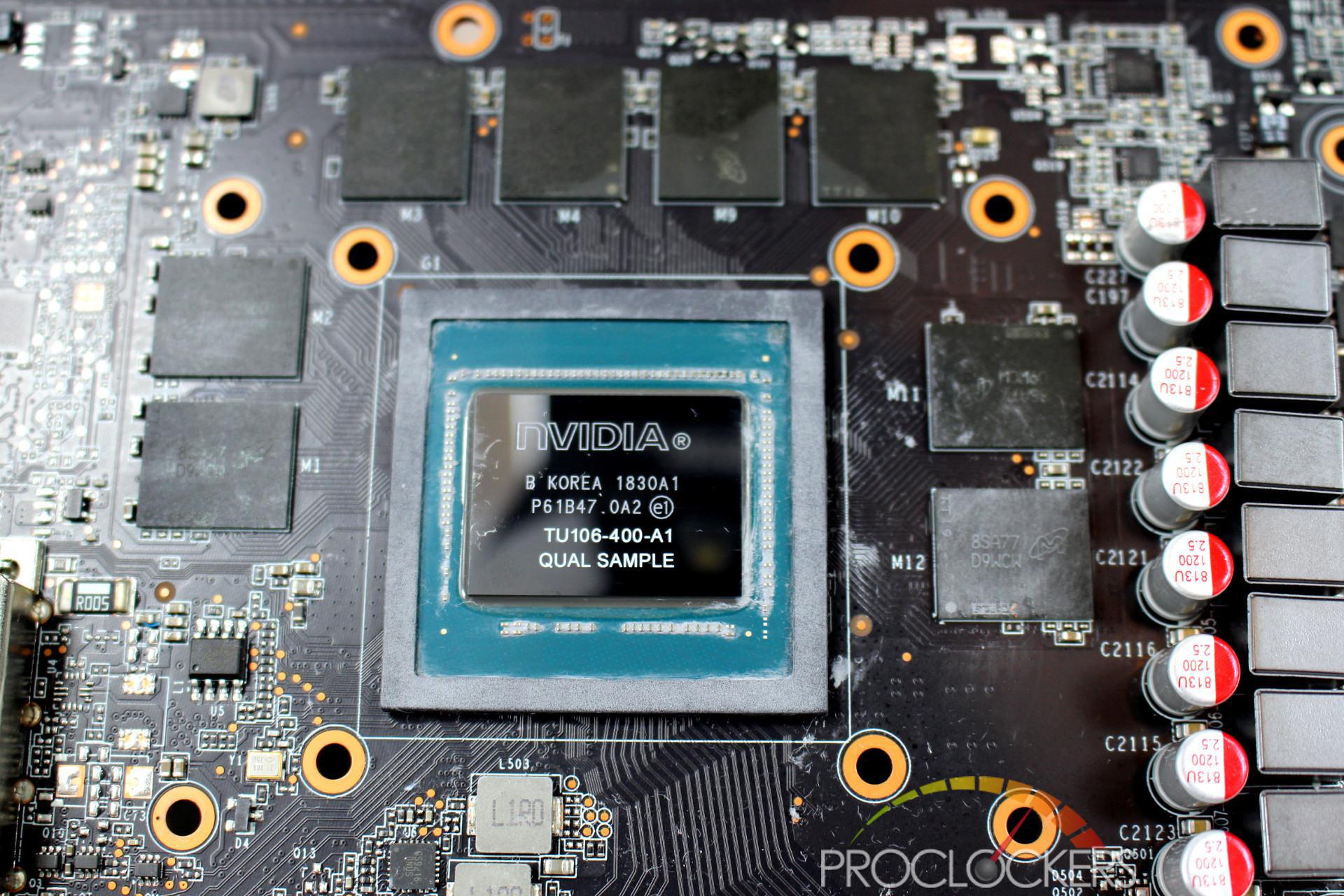
The 8GB of GDDR6 is provided by eight 1GB Micron 8SA77D9WCW modules running at 14GHz effective speed.
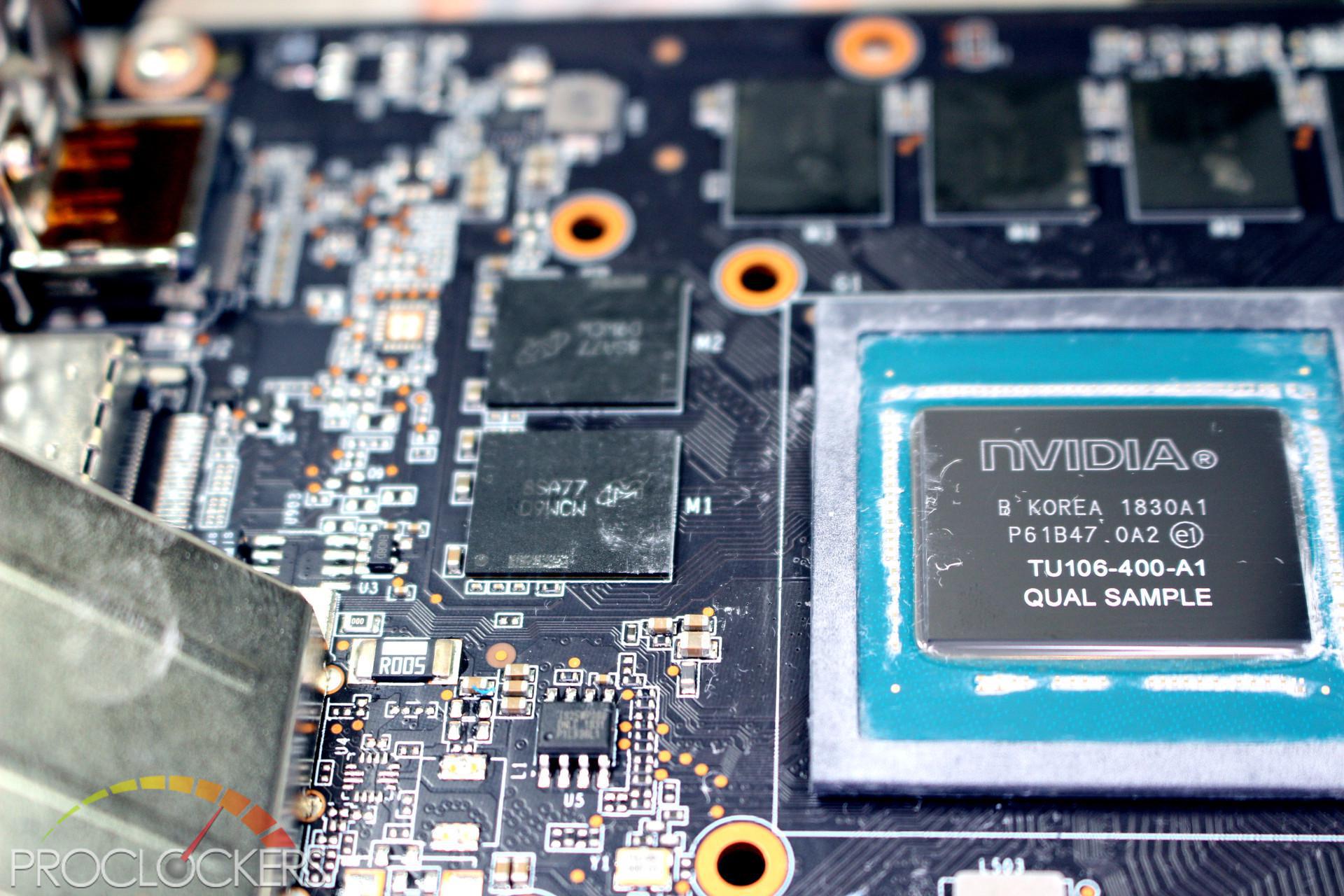
System Configuration & Software
- CPU: Intel Core i7-8700K
- GPU: Zotac Gaming RTX 2070 Blower
- Mobo: ASUS ROG Maximus XI Extreme
- Ram: 32GB GeIL Evo Spear 3200MHz C16
- SSD: Toshiba OCZ RD400 512GB
- Chassis: Streacom Open BenchTable
- OS: Microsoft Windows 10 Professional
Zotac Firestorm:
Get more control of your graphics card with our new FireStorm utility. Redesigned from the ground up, extract more performance from your ZOTAC graphics card. Tweaking and tuning are quick and easy with an optimized user interface that presents users with clock speed adjustments, fan control, fan profile, Spectra LED customization, GPU monitoring functions, and much more.
With a ZOTAC GeForce® card with SPECTRA support, you can customize your LED Lighting with FireStorm. Select among a wide spectrum of colors + off, 8 different brightness settings, multiple lighting modes, and even adjust multiple independent zones.*
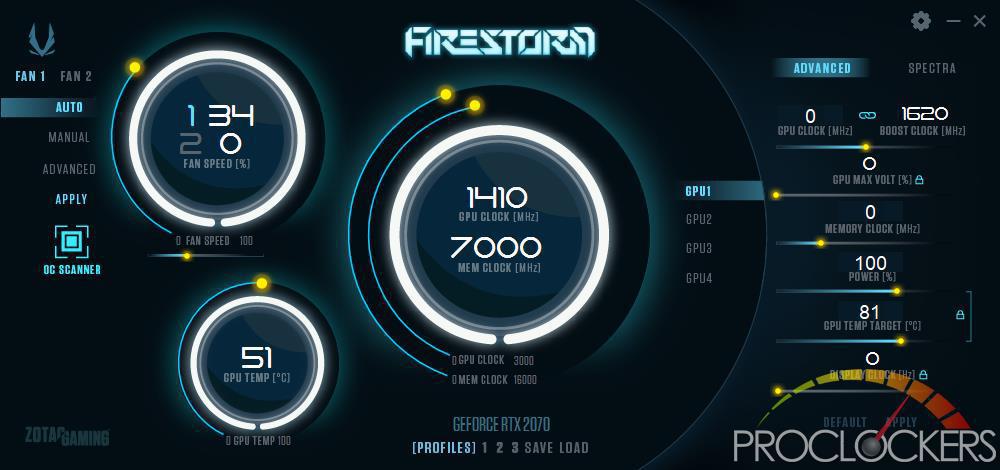
Zotac’s newly updated Firestorm tuning software provides everything you need to tweak up to four GPU’s. Fan speeds, clock speeds, voltages, and even power and temperature targets can be adjusted quickly. You can save up to three profiles to easily recall settings later on.
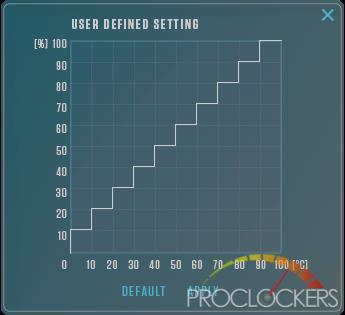
Besides manual and auto settings on the fans, you can specify a custom curve that meets your needs.
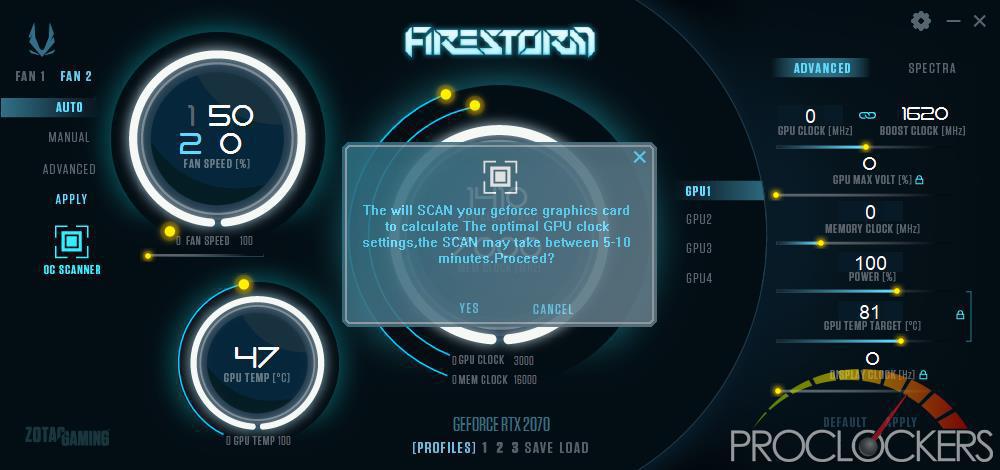
Nvidia’s new OC Scanner can be accessed on the left side near the center of the screen. The OC Scanner is new to the Turning architecture and will tweak the magic formula that Nvidia uses behind the scenes to make a very custom performance curve for your specific GPU.
Synthetic Testing & Performance
Futuremark 3DMark
3DMark includes everything you need to benchmark your PC and mobile devices in one app. Whether you’re gaming on a smartphone, tablet, notebook, or a desktop gaming PC, 3DMark includes a benchmark designed specifically for your hardware.
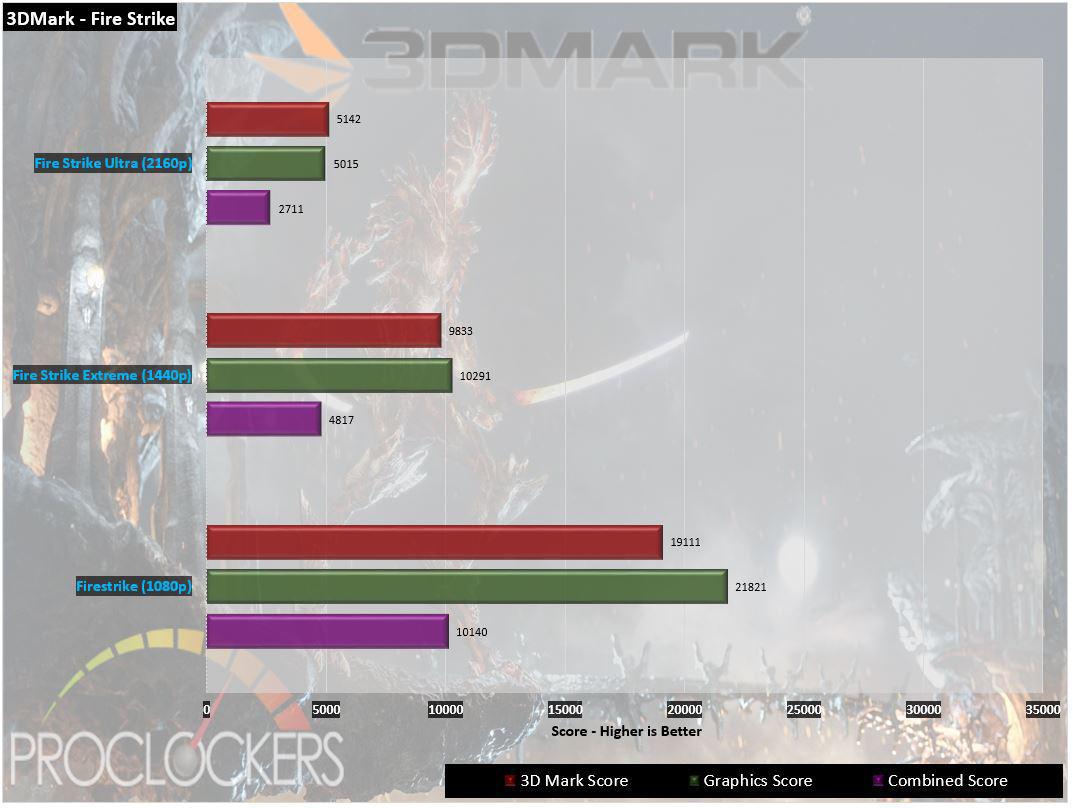
Zotac’s RTX 2070 Blower runs well in 3D Marks firestrike, scoring well over 21K in graphics at 1080p.
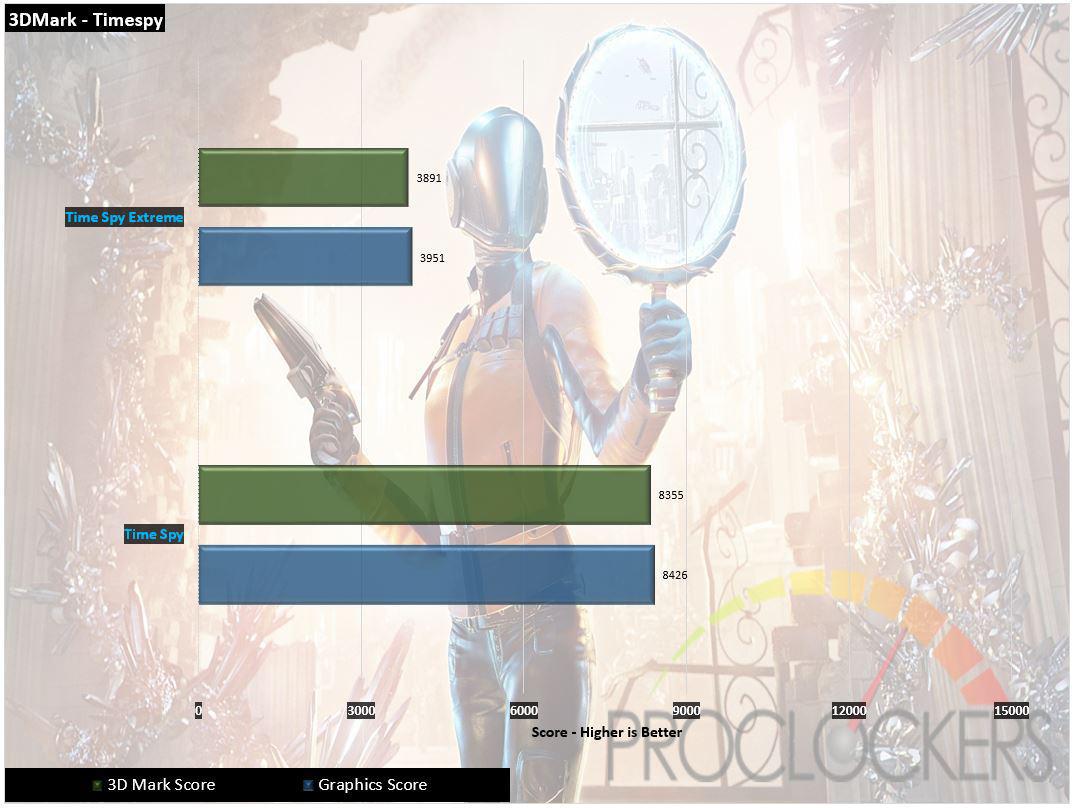
Timespy manages 55fps and 48 fps in the graphics tests for a score of 8355.
Futuremark VRMark
The performance requirements for VR games are much higher than for typical PC games. So if you’re thinking about buying an HTC Vive or an Oculus Rift, wouldn’t you like to know that your PC is ready for VR?
VRMark includes three VR benchmark tests that run on your monitor, no headset required, or on a connected HMD. At the end of each test, you’ll see whether your PC is VR ready, and if not, how far it falls short.
Orange Room Test – The Orange Room benchmark shows the impressive level of detail that can be achieved on a PC that meets the recommended hardware requirements for the HTC Vive and Oculus Rift. If your PC passes this test, it’s ready for the two most popular VR systems available today.
Cyan Room Test – Cyan Room is a DirectX 12 benchmark. It features a large, complex scene and many eye-catching effects. Cyan Room shows how using an API with less overhead can help developers deliver impressive VR experiences even on modest PC systems.
Blue Room Test – The Blue Room is a much more demanding test. It’s ideal for benchmarking the latest graphics cards. With its massive 5K rendering resolution and spectacular volumetric lighting effects, the Blue Room sets the bar for future hardware generations.
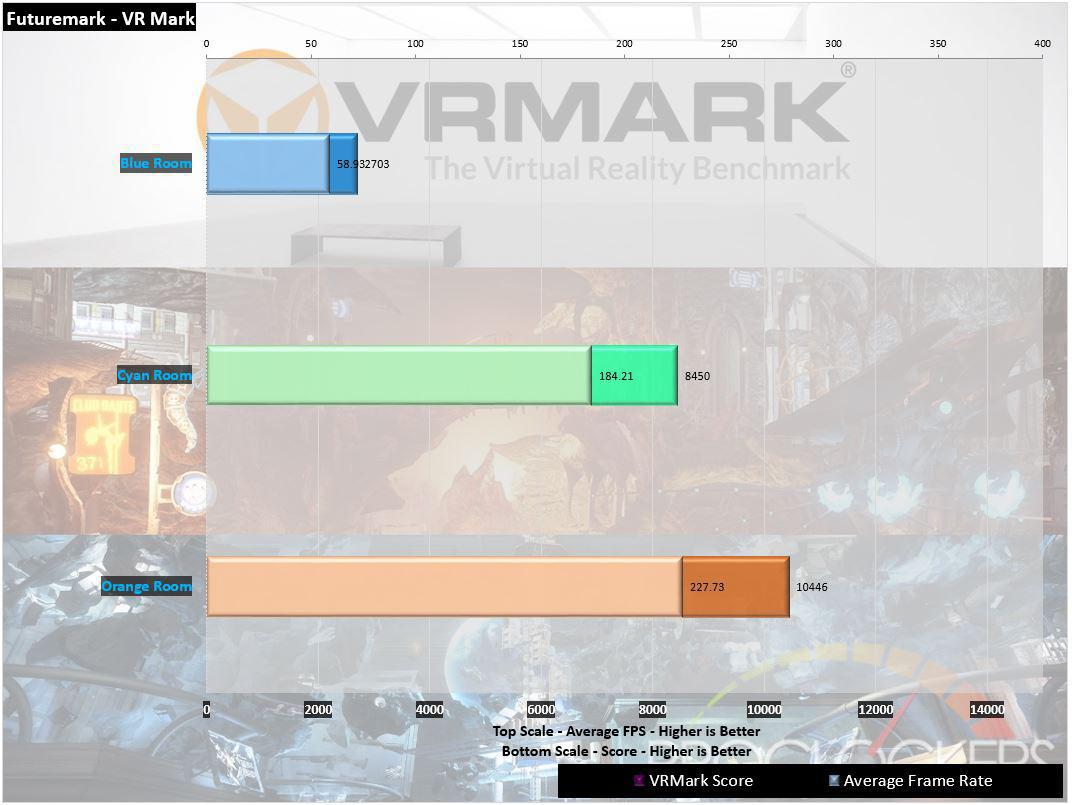
The RTX 2070 is targeted at 1440p gaming so it’s of little surprise that it scores well in the mid-range Cyan room and lower. The extremely demanding Blue Room targets 109FPS but the 2070 falls just a bit short of providing a flawless experience.
Unigine Heaven
Heaven Benchmark is a GPU-intensive benchmark that hammers graphics cards to the limits. This powerful tool can be effectively used to determine the stability of a GPU under extremely stressful conditions, as well as check the cooling system’s potential for maximum heat output.
The benchmark immerses a user into a magical steampunk world of shiny brass, wood, and gears. Nested on flying islands, a tiny village with its cozy, sun-heated cobblestone streets, and a majestic dragon on the central square gives a true sense of adventure. An interactive experience with fly-by and walk-through modes allows for exploring all corners of this world powered by the cutting-edge UNIGINE Engine that leverages the most advanced capabilities of graphics APIs and turns this bench into a visual masterpiece.
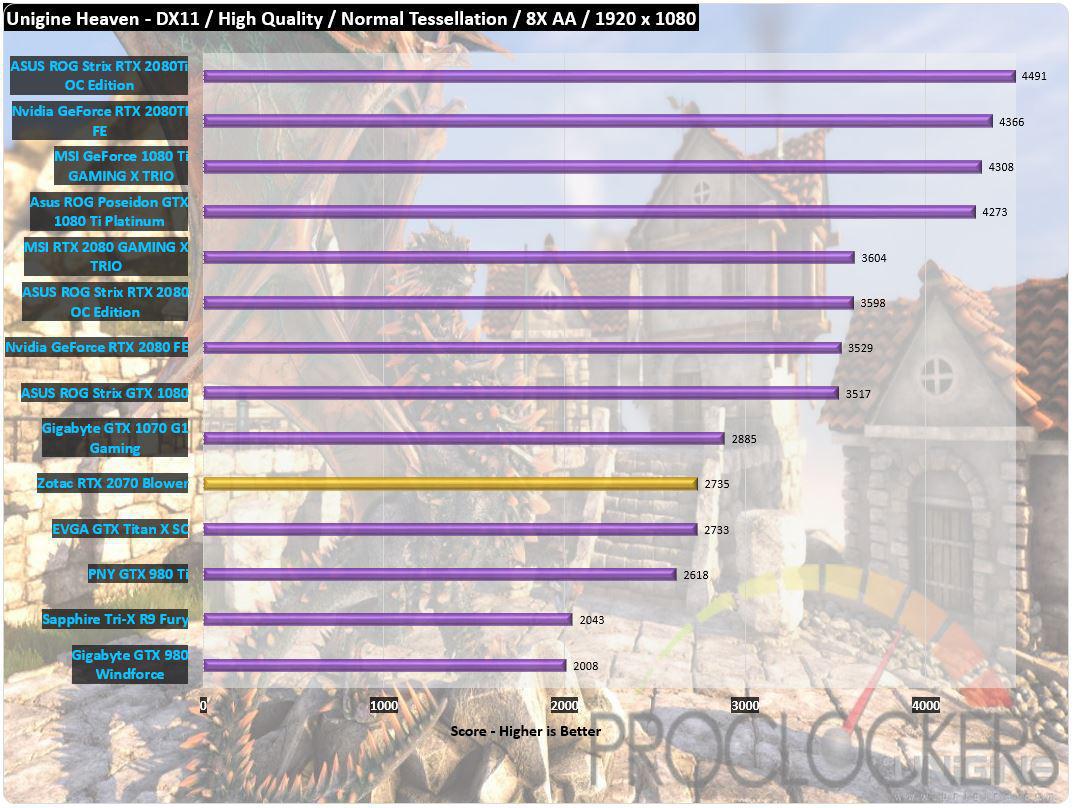
At 1080P and mid-range settings, The 2070 Blower scores 2735 points which is right around the GTX 1070 range.

At 4K and more demanding settings, the Turing architecture pulls ahead of the previous generation.
Unigine Superposition
Extreme performance and stability test for PC hardware: video card, power supply, cooling system. Check your rig in stock and overclocking modes with a real-life load! Also includes interactive experience in a beautiful, detailed environment.
A lone professor performs dangerous experiments in an abandoned classroom, day in and day out. Obsessed with inventions and discoveries beyond the wildest dreams, he strives to prove his ideas.
Once you come to this place in the early morning, you would not meet him there. The eerie thing is a loud bang from the laboratory heard a few moments ago. What was that? You have the only chance to cast some light upon this incident by going deeply into the matter of quantum theory: thorough visual inspection of professor’s records and instruments will help to lift the veil on the mystery.
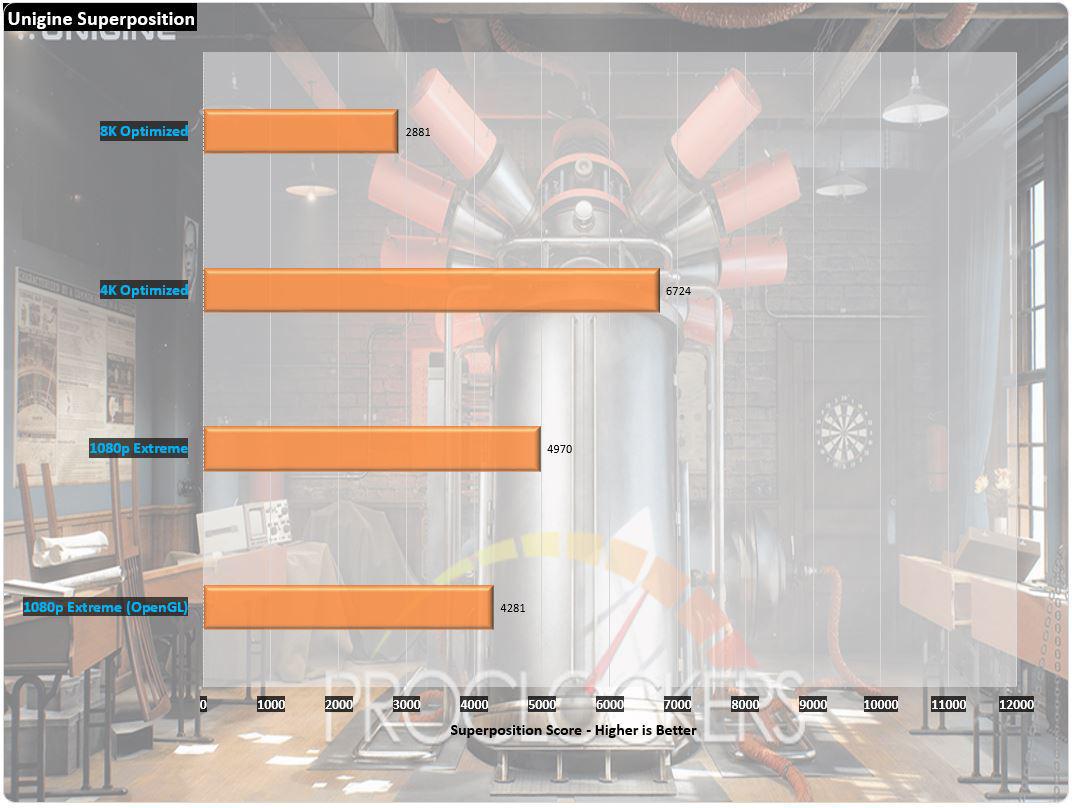
At 4K on optimized settings, the RTX 2070 Blower averages just over 50 FPS and scores a healthy 6724 points.
Game Testing & Performance
Ashes of the Singularity
Planet by planet, a war is raging across the galaxy. The technological singularity has given humanity the power to expand further than they ever have before. Now, they compete with each other and their sentient artificial intelligence adversaries for control of newfound worlds.
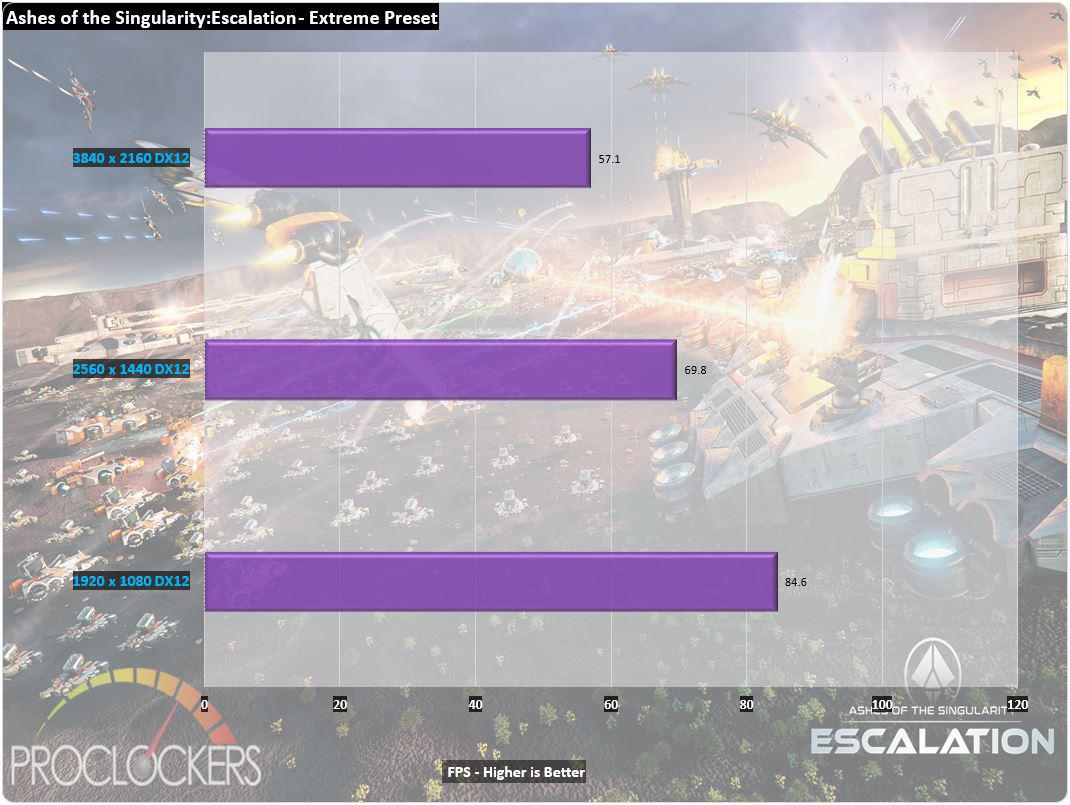
Even at the extreme preset, Zotac’s RTX 2070 Blower can just about swing 4K. at 1440p, it manages 70 FPS on average.
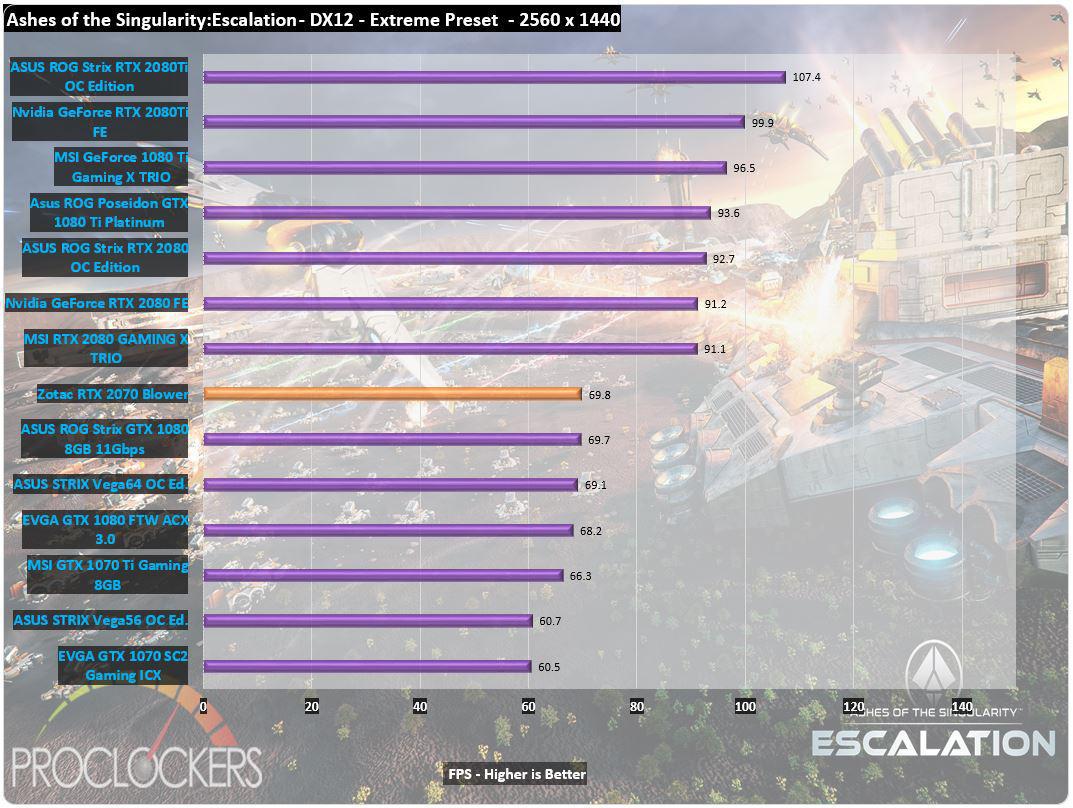
At 1440p, the 2070 Blower goes toe to toe with the GTX 1080 and RX Vega 64.
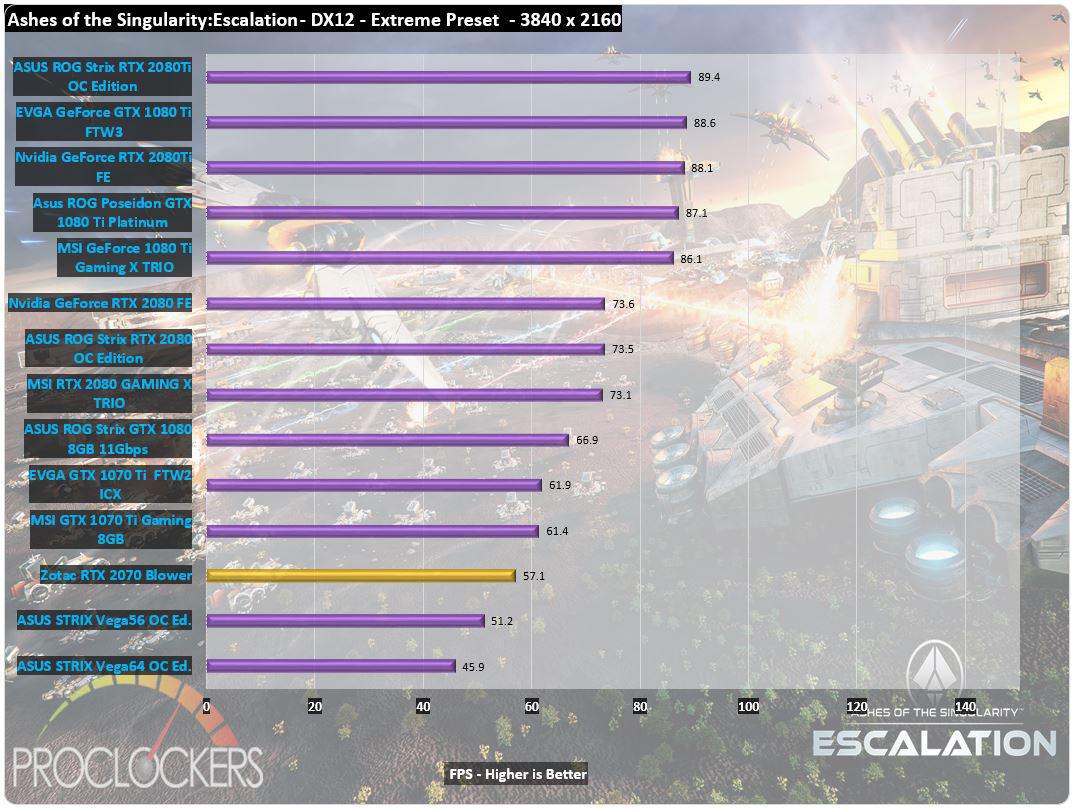
At 4K UHD still holds the lead over the former GTX 1070.
Dues Ex: Mankind Divided
The year is 2029, and mechanically augmented humans have now been deemed outcasts, living a life of complete and total segregation from the rest of society.
Now an experienced covert operative, Adam Jensen is forced to operate in a world that has grown to despise his kind. Armed with a new arsenal of state-of-the-art weapons and augmentations, he must choose the right approach, along with who to trust, in order to unravel a vast worldwide conspiracy.
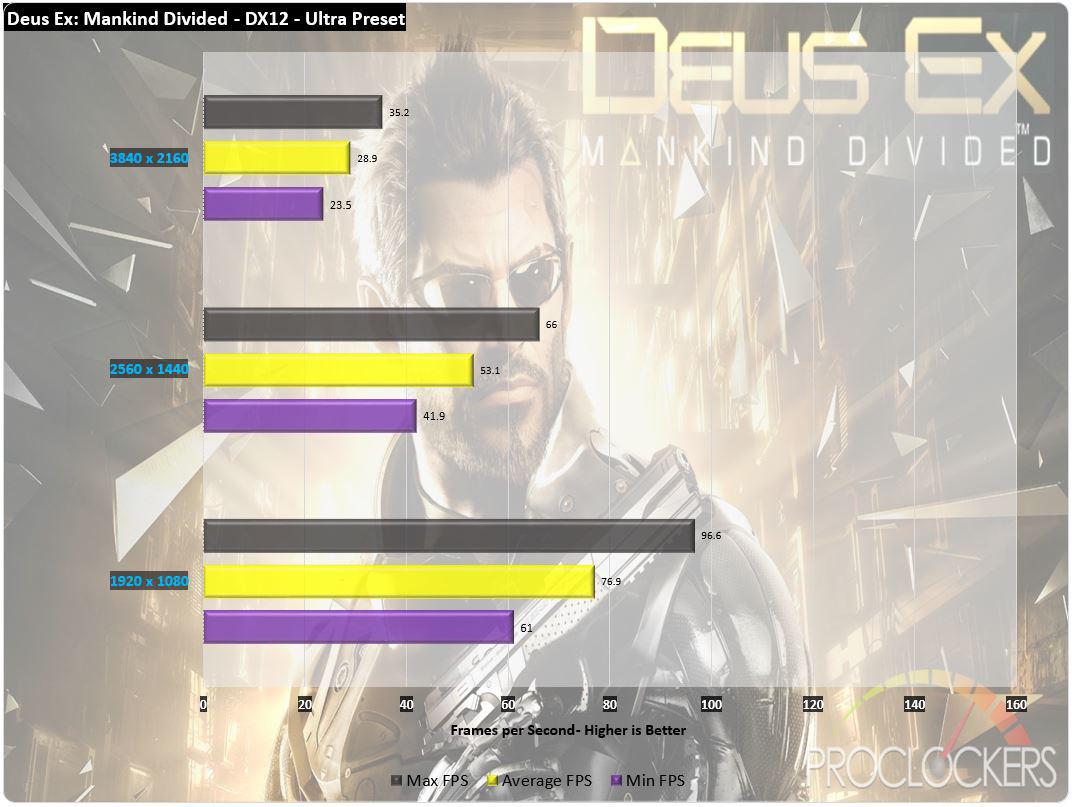
Deus Ex is fully playable at 1440p but the Ultra preset is just a little too demanding at 4K to maintain good framerates.
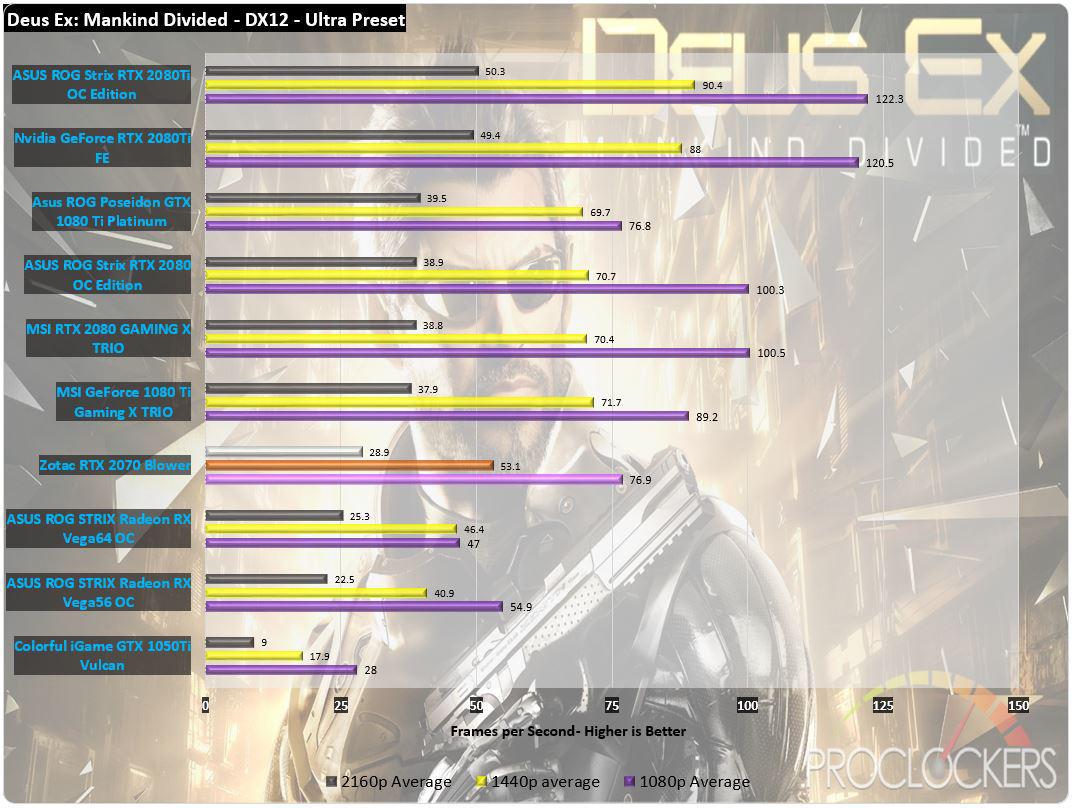
In comparison, the RTX 2070 Blower bests AMD’s current flagship quite easily and its hot on the heels of the GTX 1080Ti.
Middle-Earth: Shadow of War
In the epic sequel to the award-winning Middle-earth: Shadow of Mordor, go behind enemy lines to forge an army, conquer Fortresses and dominate Mordor from within. Experience how the award-winning Nemesis System creates unique personal stories with every enemy and follower, and confront the full power of the Dark Lord Sauron and his Ringwraiths in this epic new story of Middle-earth.
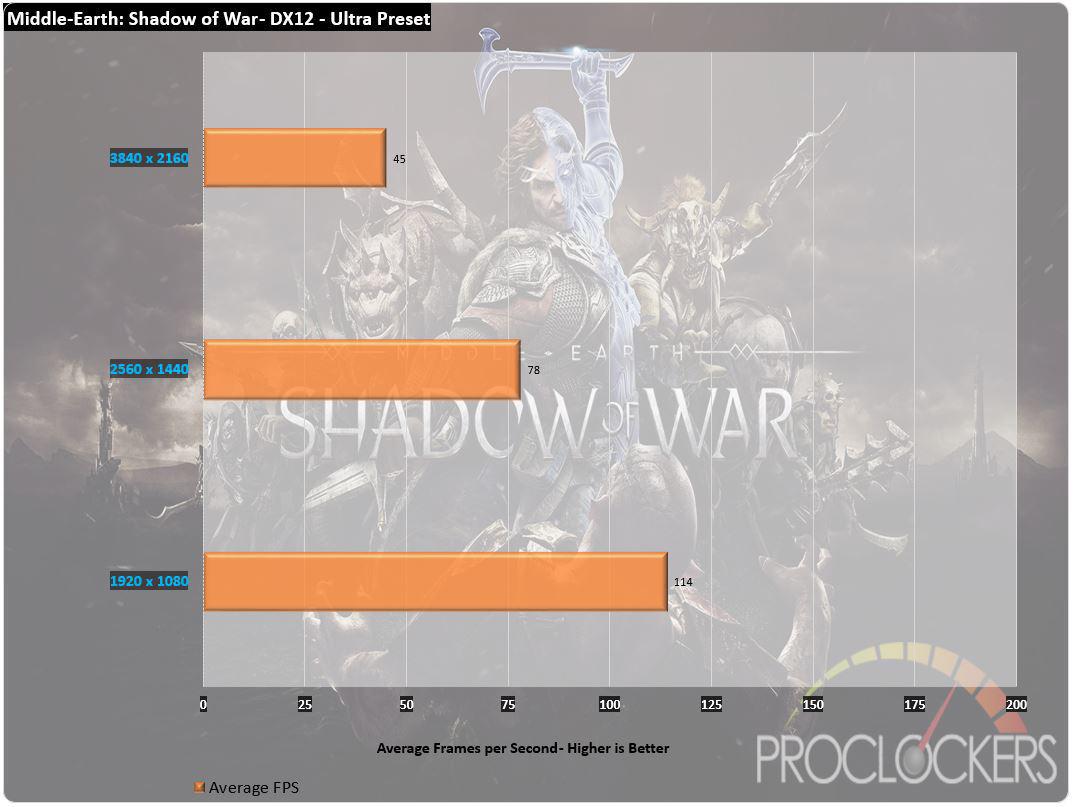
Middle-Earth” Shadow of War comes in at 45 FPS on average at 4K at max settings, and 78 FPS at 1440p.
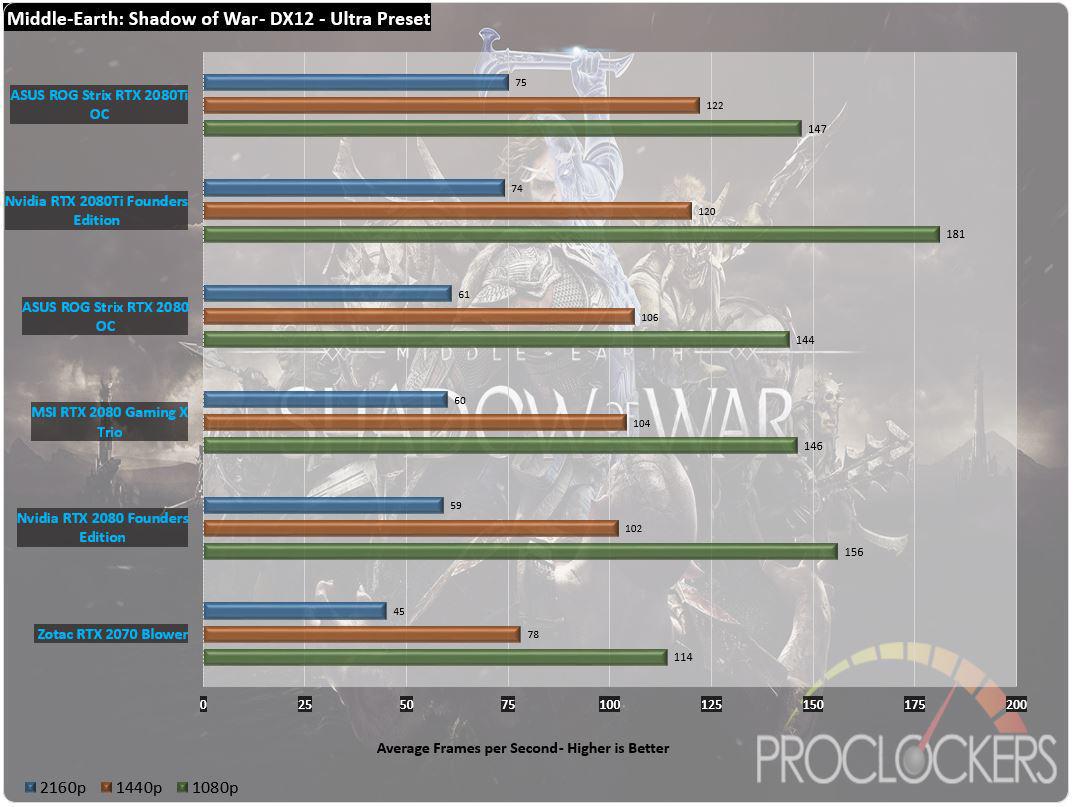
The gap between the RTX 2070 and 2080 cards really isn’t that wide.
Rise of the Tomb Raider
Rise of the Tomb Raider is an action-adventure video game developed by Crystal Dynamics and published by Square Enix. It is the sequel to the 2013 video game Tomb Raider, a reboot of the Tomb Raider franchise. It was released on Xbox One and Xbox 360 in November 2015 and for Microsoft Windows in January 2016. It is set to release for PlayStation 4 in the second half of 2016.
Rise of the Tomb Raider was officially announced in June 2014. The game’s storyline follows Lara Croft as she ventures into Siberia in search of the legendary city of Kitezh, whilst battling a paramilitary organization that intends on beating her to the city’s promise of immortality. Presented from a third-person perspective, the game primarily focuses on survival and combat, while the player may also explore its landscape and various optional tombs. Camilla Luddington returns to voice and performs her role as Lara.
Upon release, Rise of the Tomb Raider received positive reviews, with critics praising its graphics, gameplay, and characterization. It was the best-selling Xbox One game during Christmas week and had sold over one million copies by the end of 2015. Additional content was also released, including a new story campaign, a new gameplay mode, as well as new outfits and weapons for Lara.
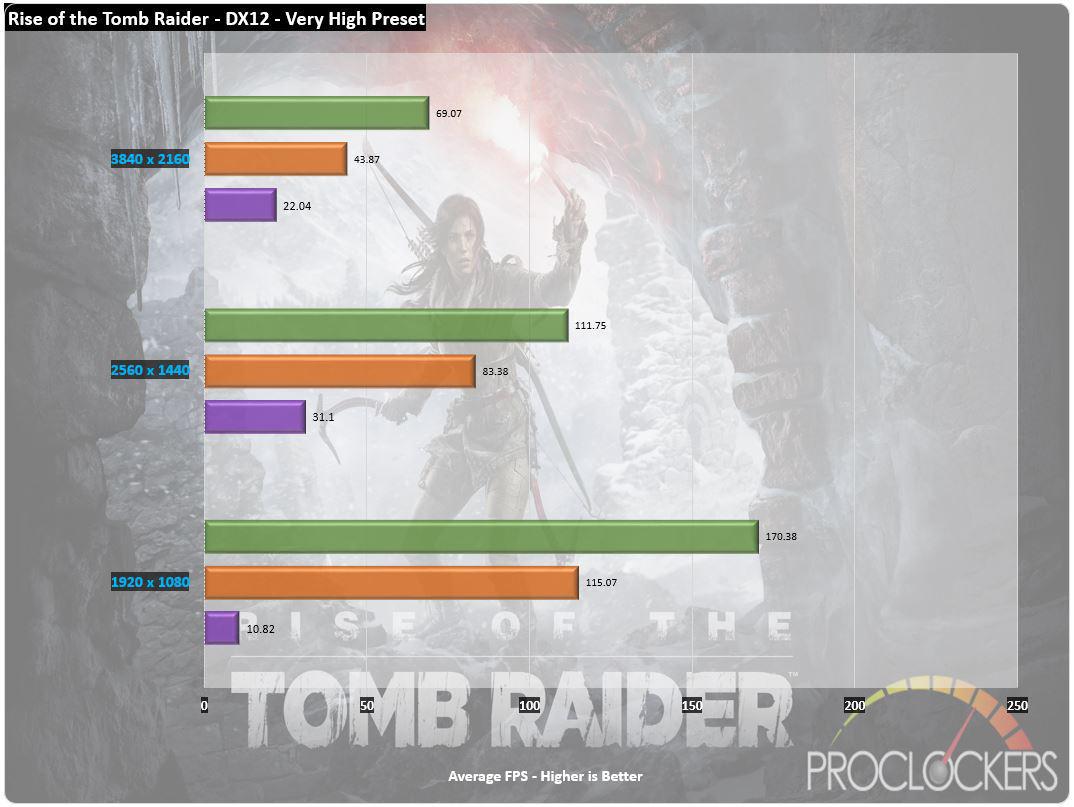
Rise of the Tomb Raider is playable at all resolutions here, 1440p screams in at 83 FPS.
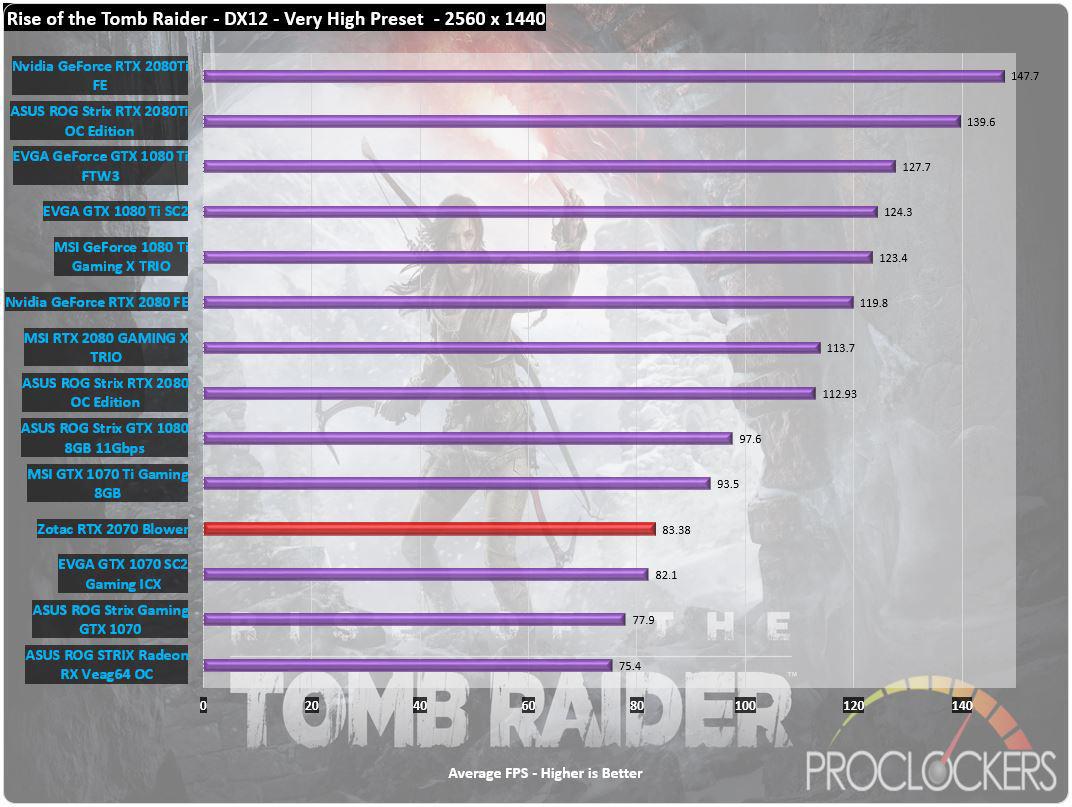
Zotac’s RTX 2070 Blower handily leads its predecessor at 1440p.
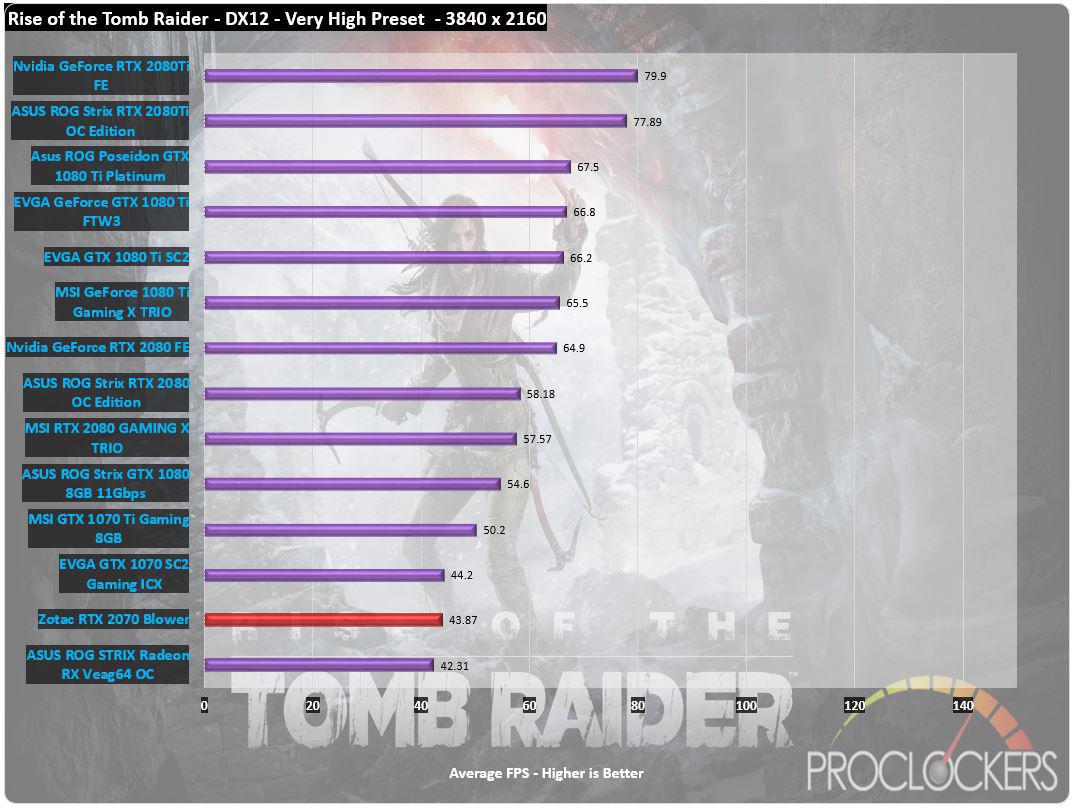
At 4K UHD, the 2070 Blower leads AMD’s flagship and jostles for position between the GTX 1070 and 1070Ti.
Grand Theft Auto: V
“When a young street hustler, a retired bank robber, and a terrifying psychopath find themselves entangled with some of the most frightening and deranged elements of the criminal underworld, the U.S. government and the entertainment industry, they must pull off a series of dangerous heists to survive in a ruthless city in which they can trust nobody, least of all each other.
Grand Theft Auto V for PC offers players the option to explore the award-winning world of Los Santos and Blaine County in resolutions of up to 4k and beyond, as well as the chance to experience the game running at 60 frames per second.”
Grand Theft Auto: V is the oldest game in our benchmark suite but still proves to be a heavy load on high settings and resolutions. The game offers players a huge range of PC-specific customization options, including over 25 separate configurable settings for texture quality, shaders, tessellation, anti-aliasing and more. It has the highest recommended system requirements in our game benchmark suite.
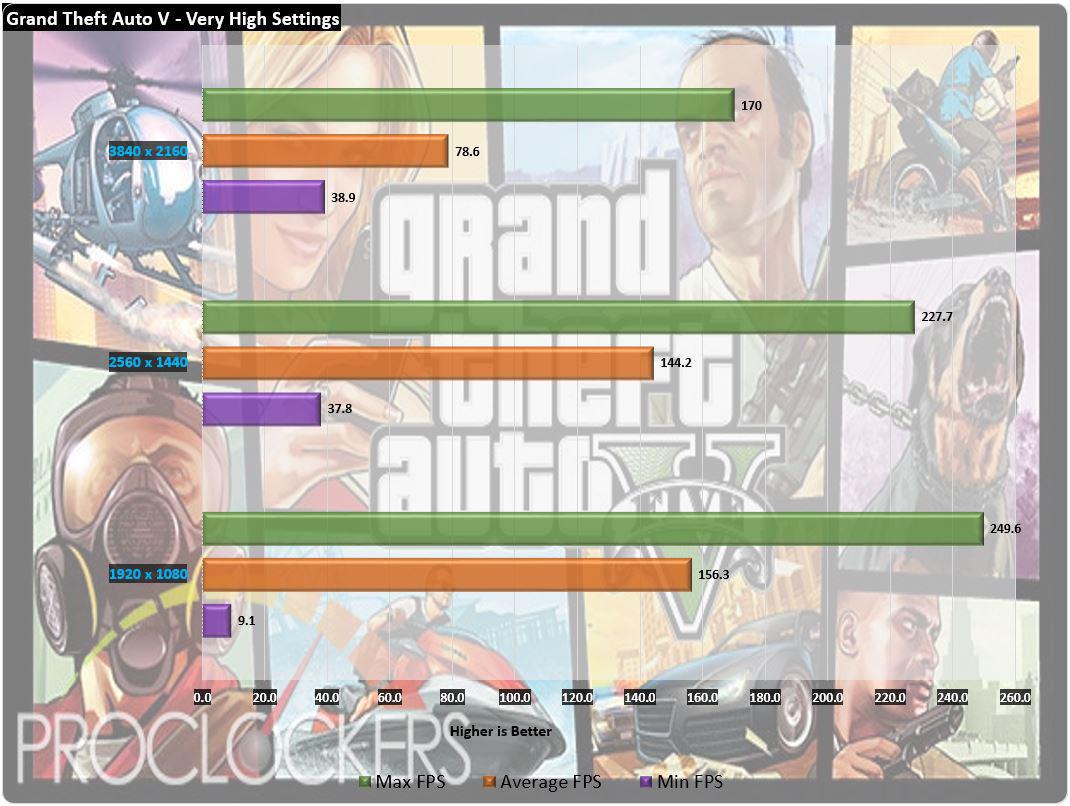
At our settings, the RTX 2070 can handle 4K UHD and below without trying too hard.

When pitted against the pack, the Blower card is closing in on the GTX 1080 cards.
Metro: Last Light
“It Is the Year 2034. Beneath the ruins of post-apocalyptic Moscow, in the tunnels of the Metro, the remnants of mankind are besieged by deadly threats from outside – and within. Mutants stalk the catacombs beneath the desolate surface, and hunt amidst the poisoned skies above.”
Developed by 4A Games and published by Deepsilver, Metro: Last Light uses the 4A game engine. At its highest settings, the 4A game engine is capable of bringing all but the most extreme gaming systems to their knees.
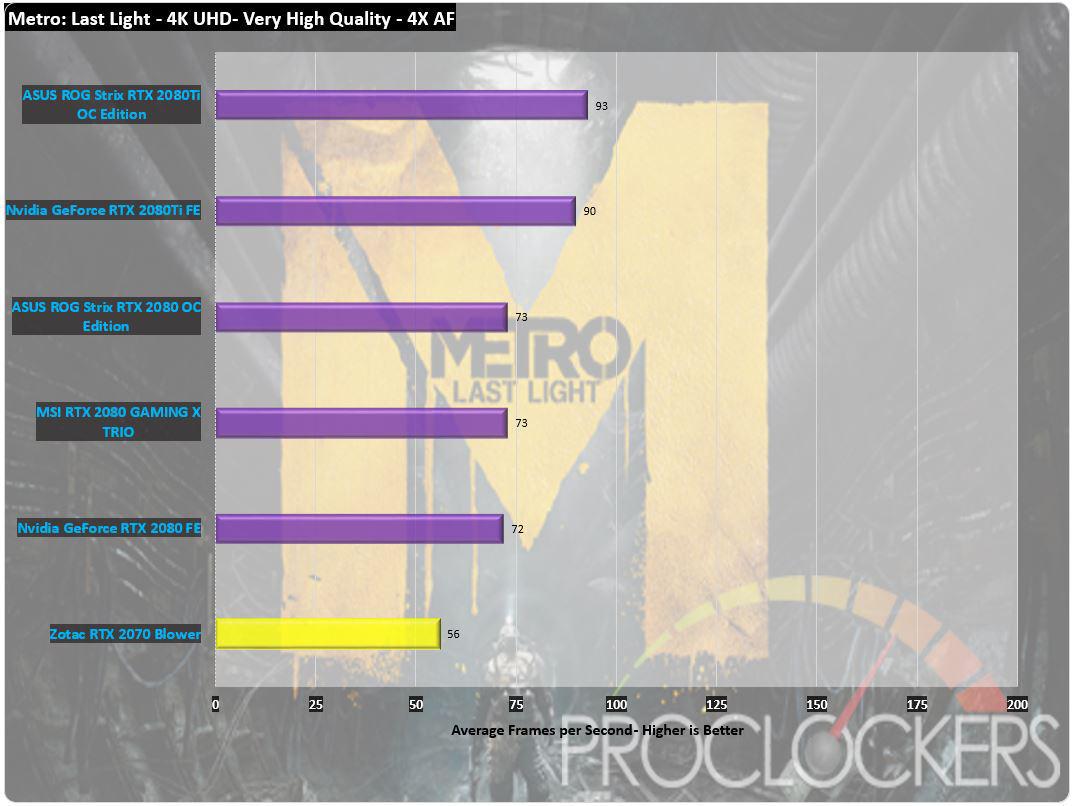
We’ll skip the lower end 1080p run and just cut to the chase at 4K and high settings. Even with this demanding load, Zotac’s RTX 2070 Blower manages an average of 56 FPS.
Overclocking, Power & Temps
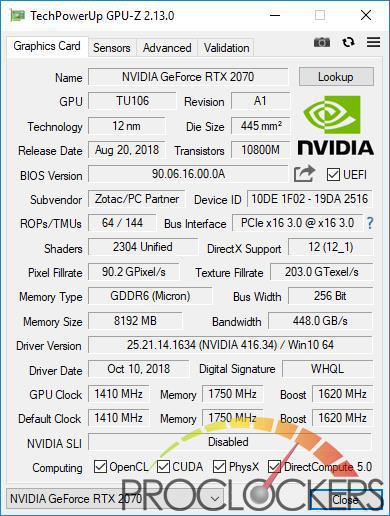
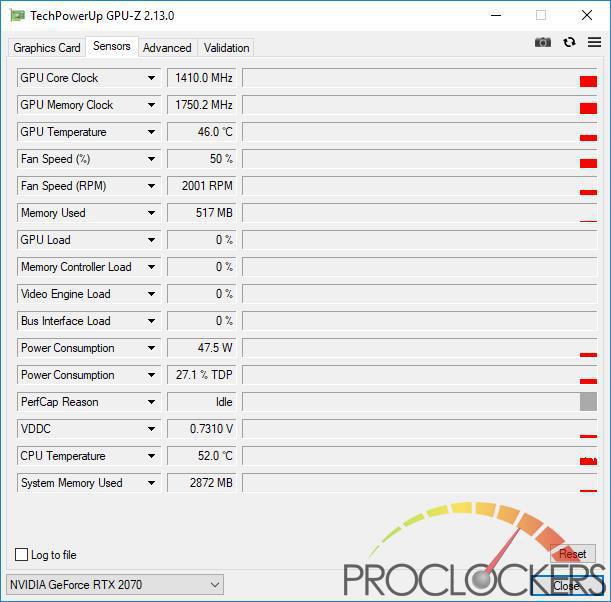
At idle, Zotac’s RTX 2070 Blower hums along at its default clock speed of 1410 MHz. The blower fan sits at around 50% or 2000 RPM which lets the temperature hover around 46C. Total system power draw runs around 125W from the wall.
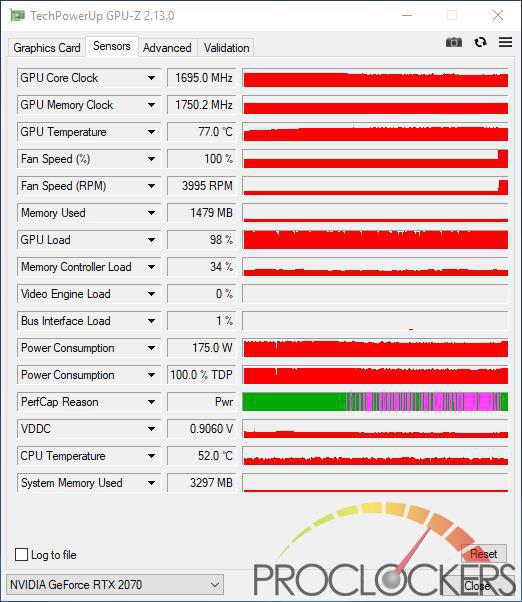
Under load at stock, we see the card spike to as high as 1845MHz but quickly falls to around 1680MHz as it heats up. In fact, the card climbs into the upper 70C range and starts throttling on thermals as well as power limits. Power draw at this point hovers around 310W from the wall which gives us about 185W of additional power draw from the GPU alone.

We’ll ramp the fan to 100% as well as max out the power limit to 114% next. The Clocks settle in around 1830MHz and the temps fall to 65C.
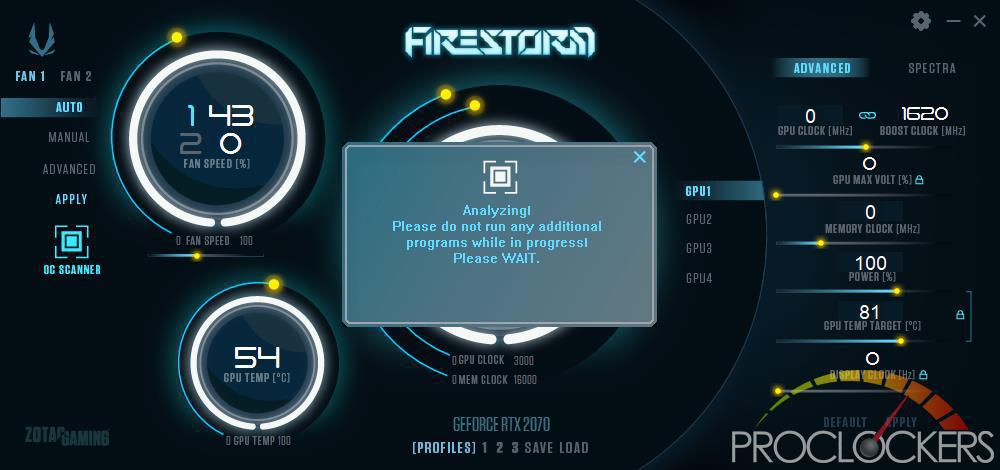
We tried the OC scanner feature which seems to work, it stepped our clocks up to around 1930MHz before crashing. We couldn’t get it to recover or finish so we gave up and moved to tuning manually.
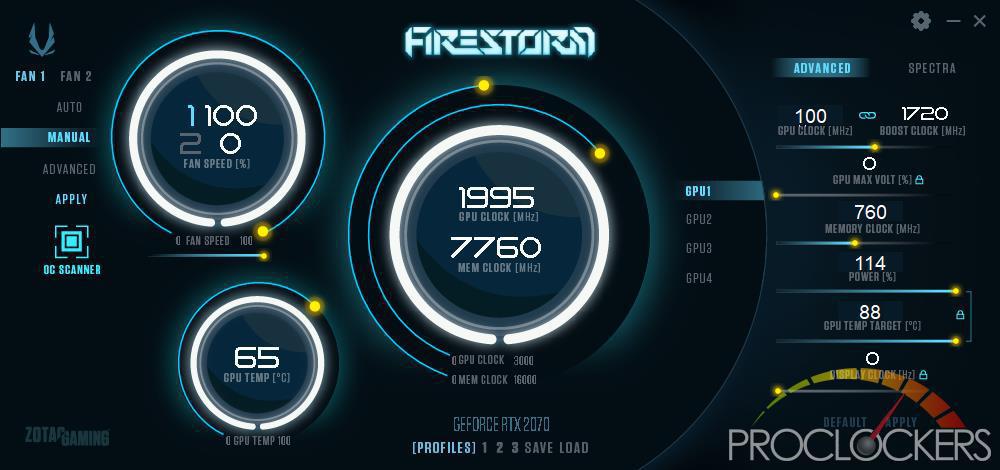
We were able to slowly raise the memory speed up to +760MHz for an effective speed of just over 15.5 GHz. We pushed the GPU core up +100MHz which let it hiver around the 2GHz mark +/- 30MHz full time.
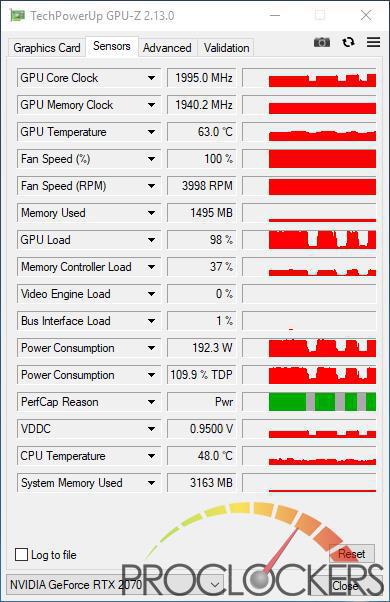
We were able to get to 2100MHz core speed with +170MHz but it was not 100% stable so the below is our final clocks.
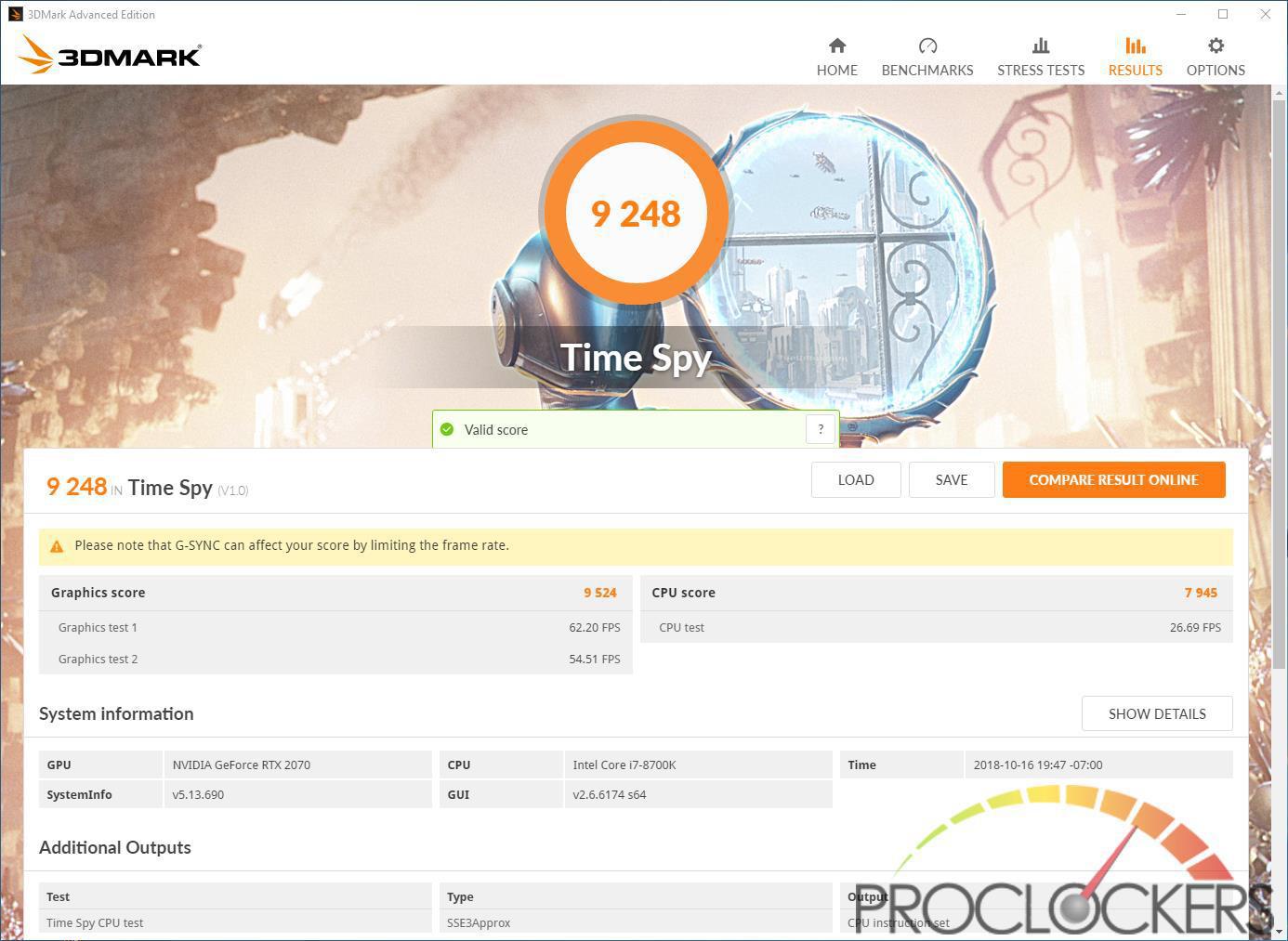
This gives us a final Timespy run of 9248, nearly an 11% increase in score. With the fan still at 100%, we maintain a core temp of around 65C, so a decent overclock is possible if you are willing to sacrifice silence. *Note*, G-Sync is not enabled for testing, In fact, the system is not even connected to a G-sync equiped monitor.
Final Thoughts & Conclusion

Nvidia’s RTX 2070 is sitting in a sweet spot in the gaming world. Fully capable of driving extremely high frame rates at 1080p and higher frame rates at 1440p, this is a great choice for the masses. Many games will even play at 4K if you are willing to knock the settings sliders down a notch or two. When compared to the previous generation in the ‘dollar per performance’ category, the RTX 2070 doesn’t really change much compared to say, a GTX 1080. But what you DO get is all of the new features such as ray tracing and DLSS. Thanks to the Tensor cores, DLSS is a bit of an unsung hero this generation as it frees up the CUDA cores from post-processing so you get a very high-quality image at the same frame rate, or a similar quality image at higher resolutions and/or frame rates.
Zotac’s RTX 2070 Blower ran really well for us, and when left at stock ran nice and quiet. The RTX 2070 chip at full load does put out some heat, and Zotac does sacrifice the very top end of performance to keep the card quiet as we did see some thermal throttling at full load at stock. If you want to unlock that last little bit of performance, the Firestorm utility is quite intuitive and ramping the fan speed up is quite easy. If you like smaller systems or have a cramped case with less than fantastic airflow, the blower fan will blast all of the hot air it makes right out the back of the case instead of baking your CPU and other components. When you are talking 170+ watts of heat at full tilt, it would not take long to overwhelm a CPU cooler by dumping that hot air in your case like most other cooler designs tends to do.
As an affordable entrance into the RTX GPU market, Zotac’s RTX 2070 Blower is a solid choice. If you have a small and cramped system, you can give it a significant boost in graphical muscle without turning it into a miniature oven.
Great Job Zotac!


